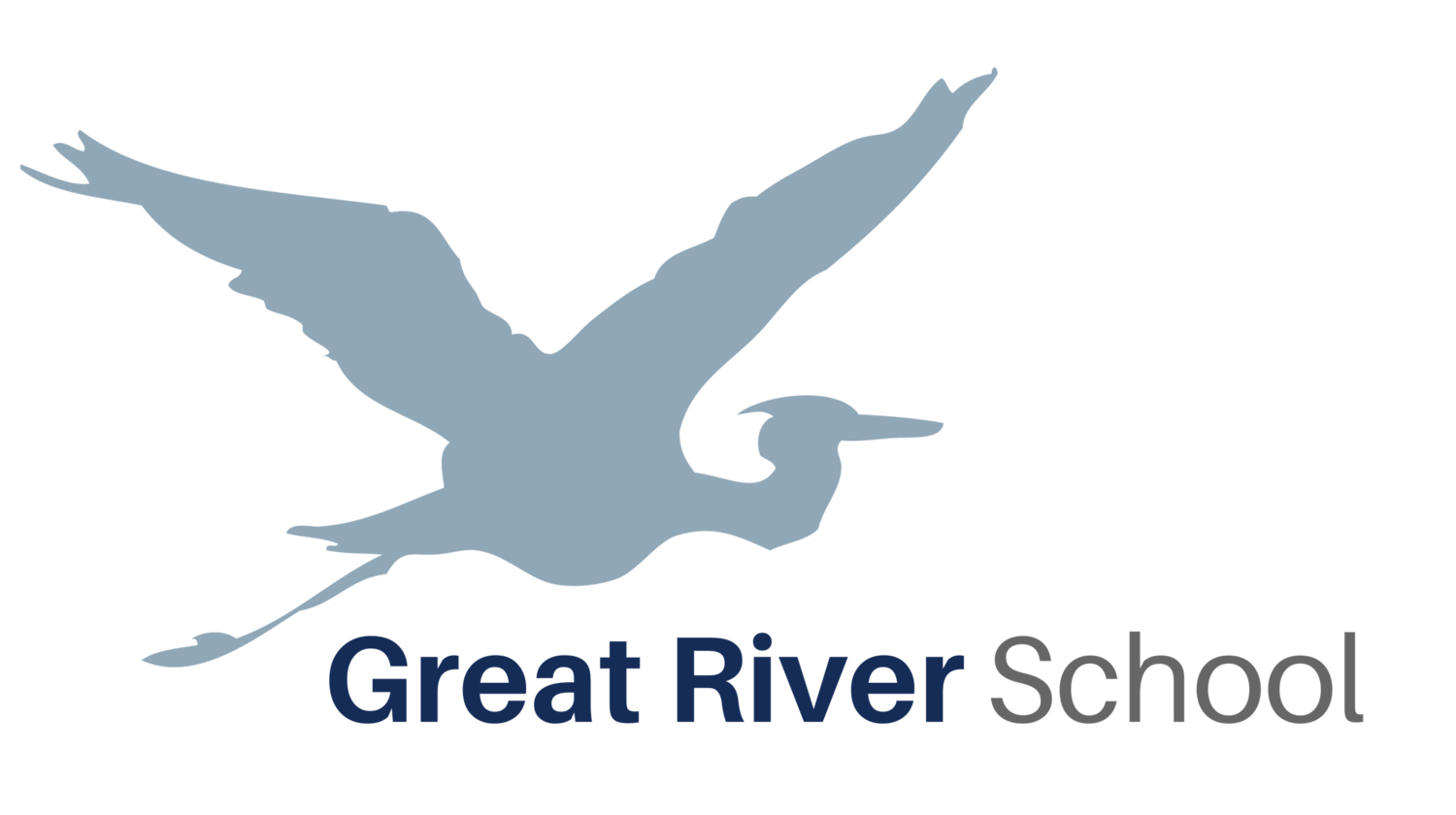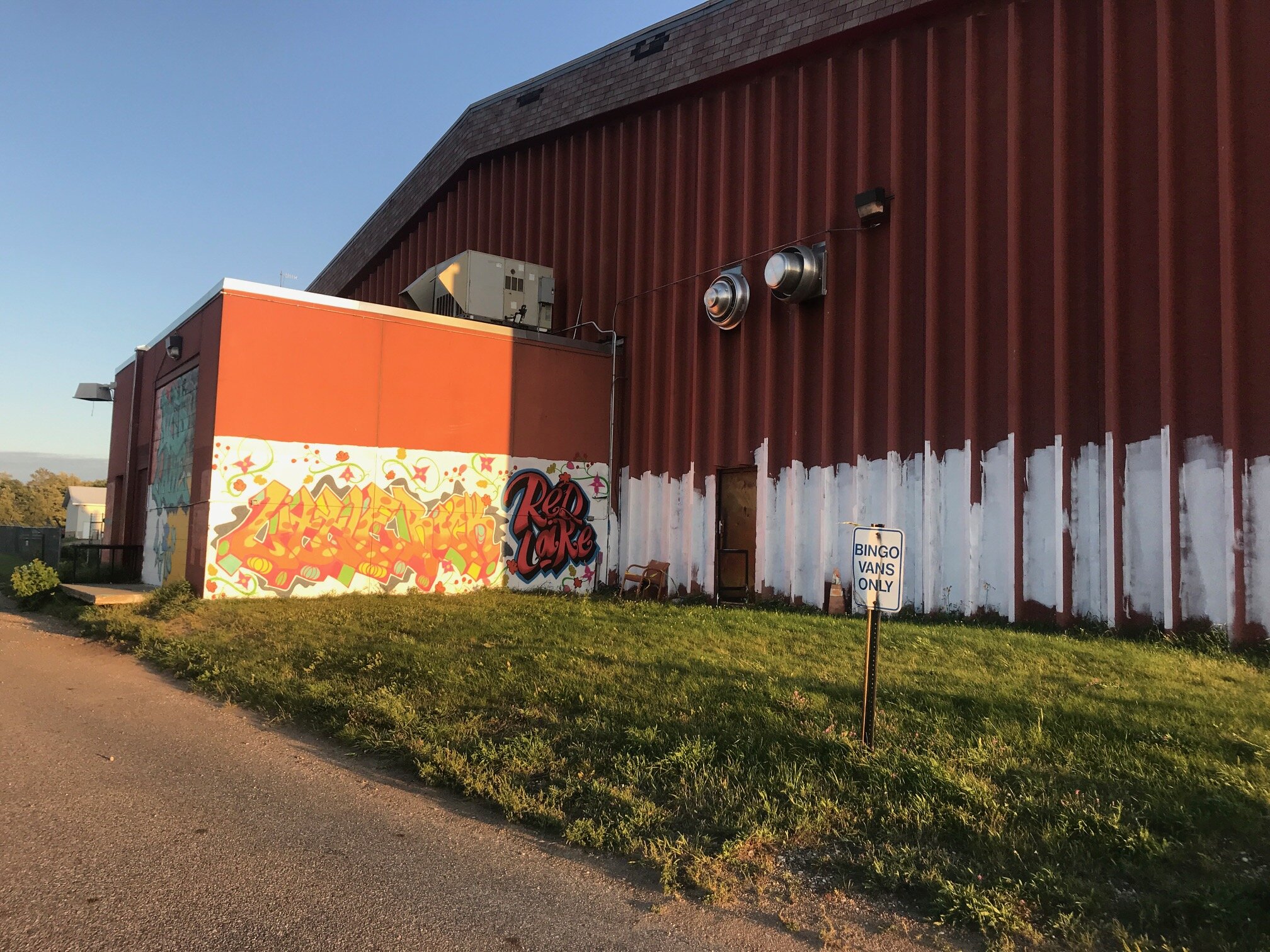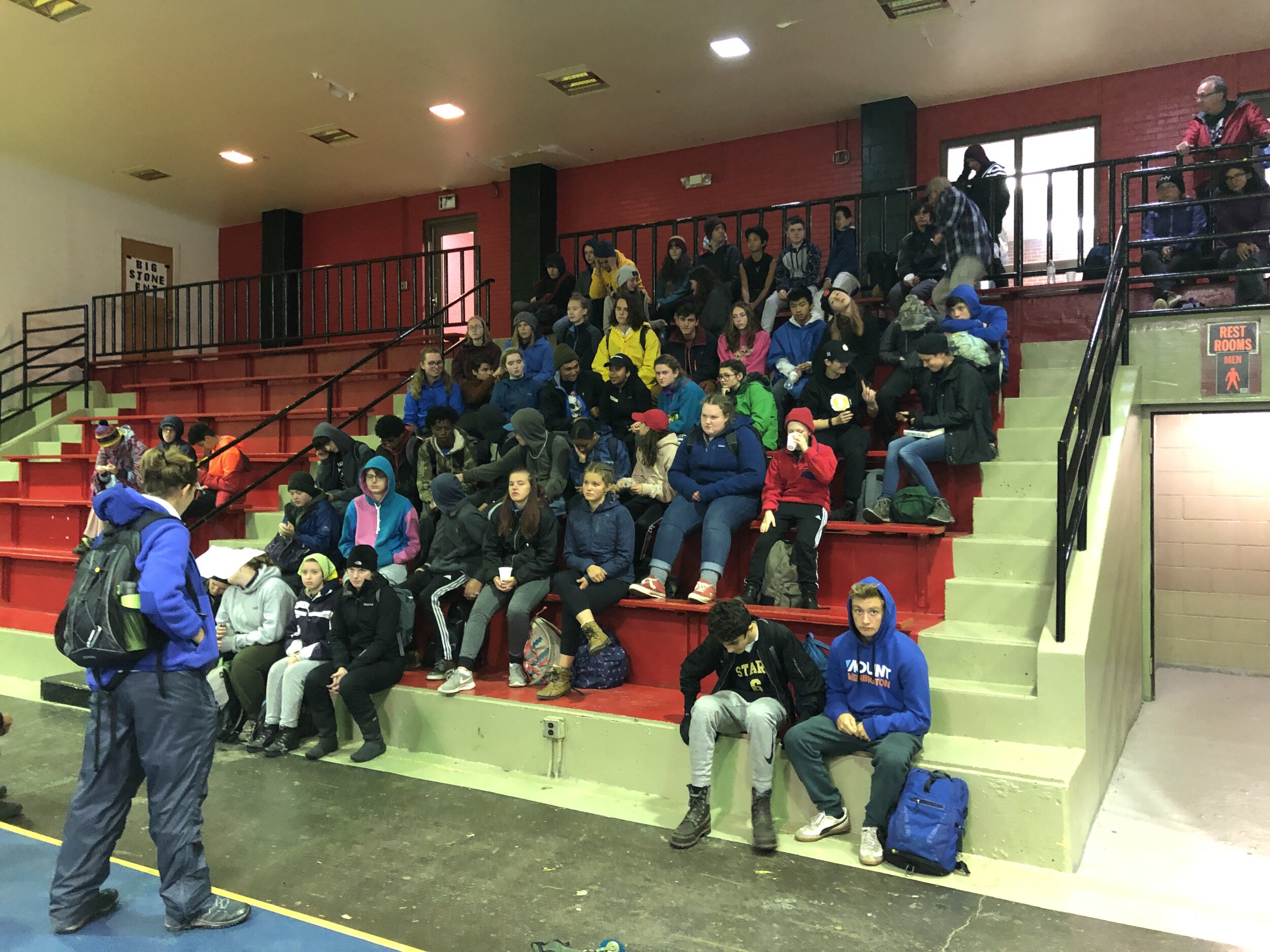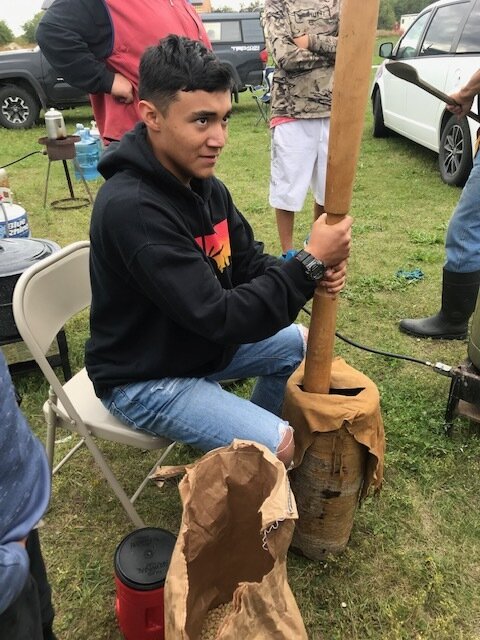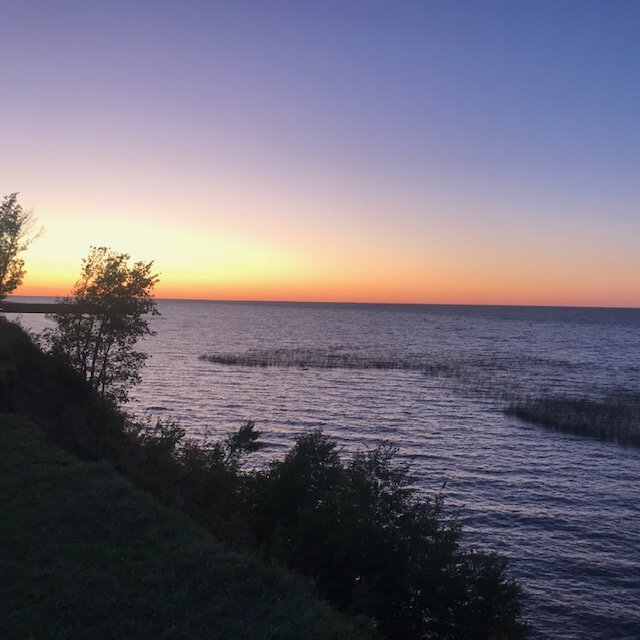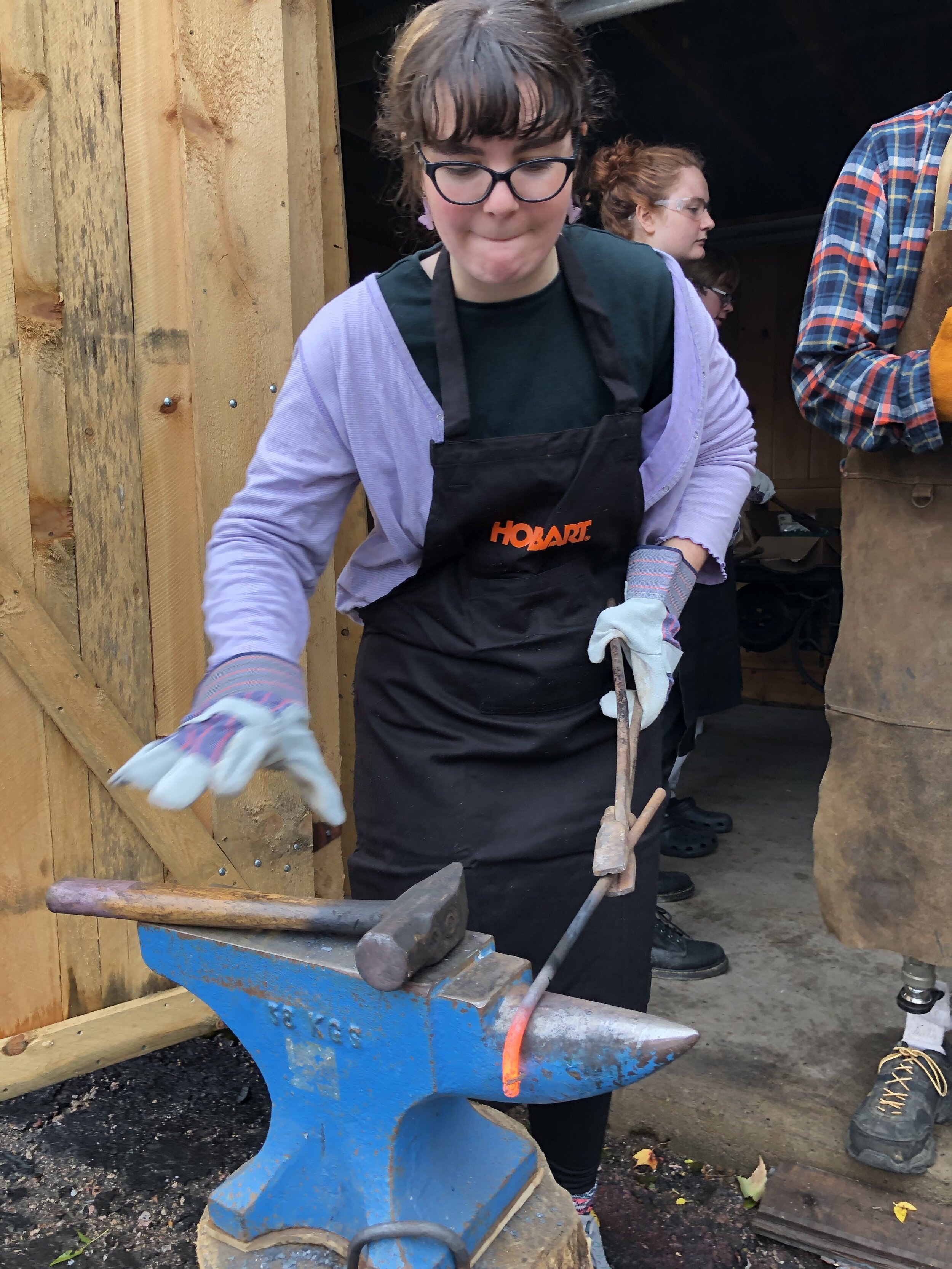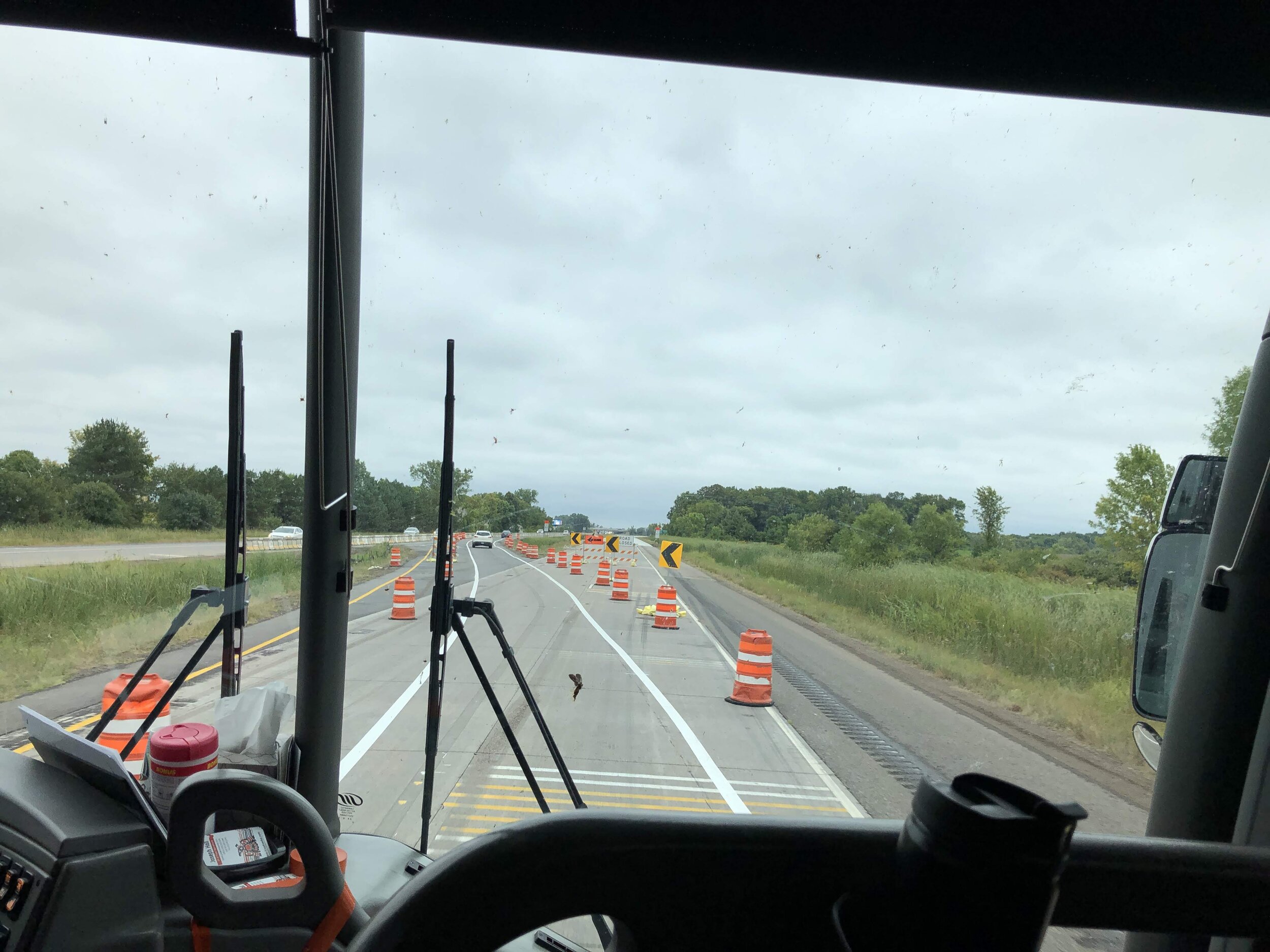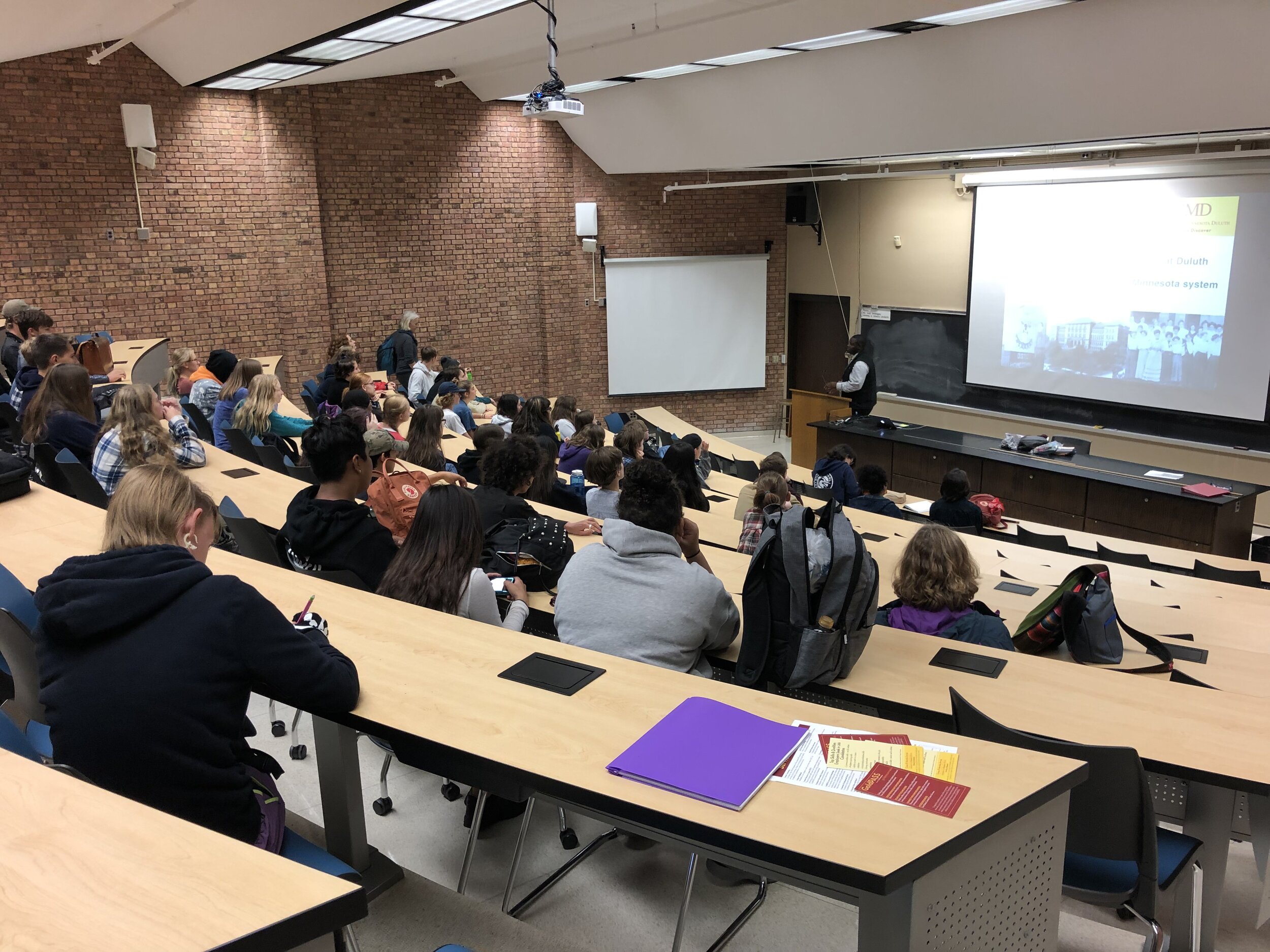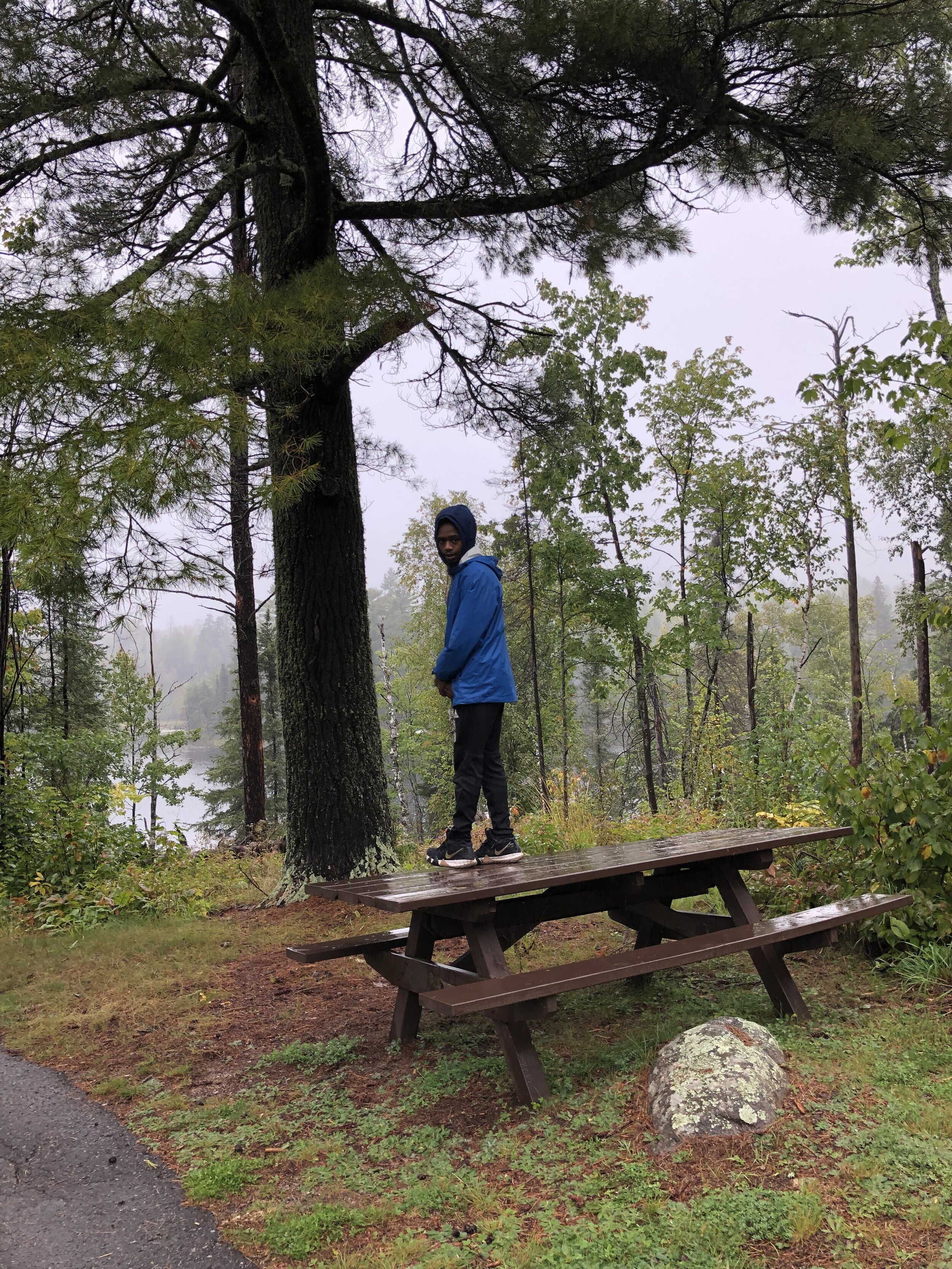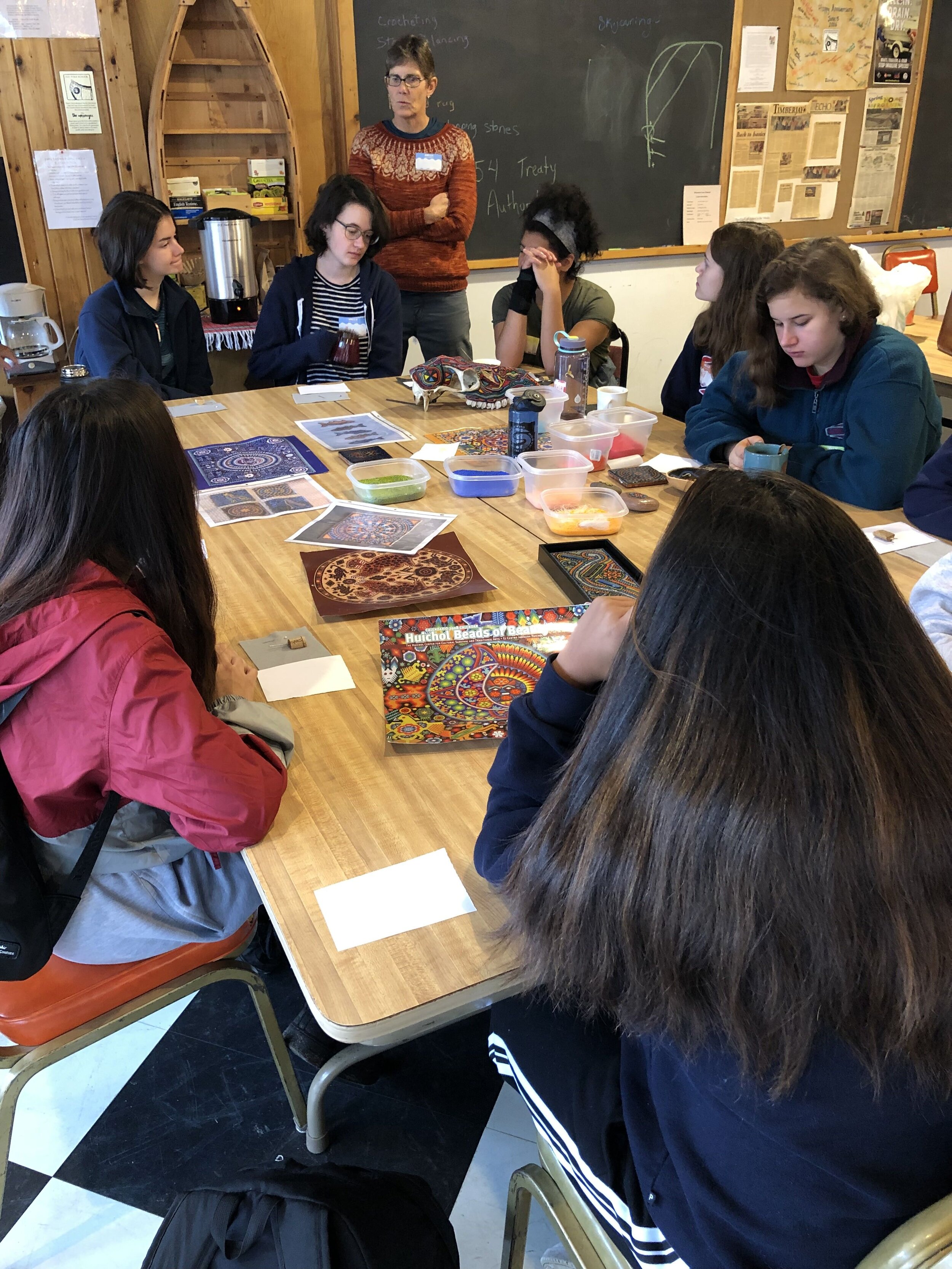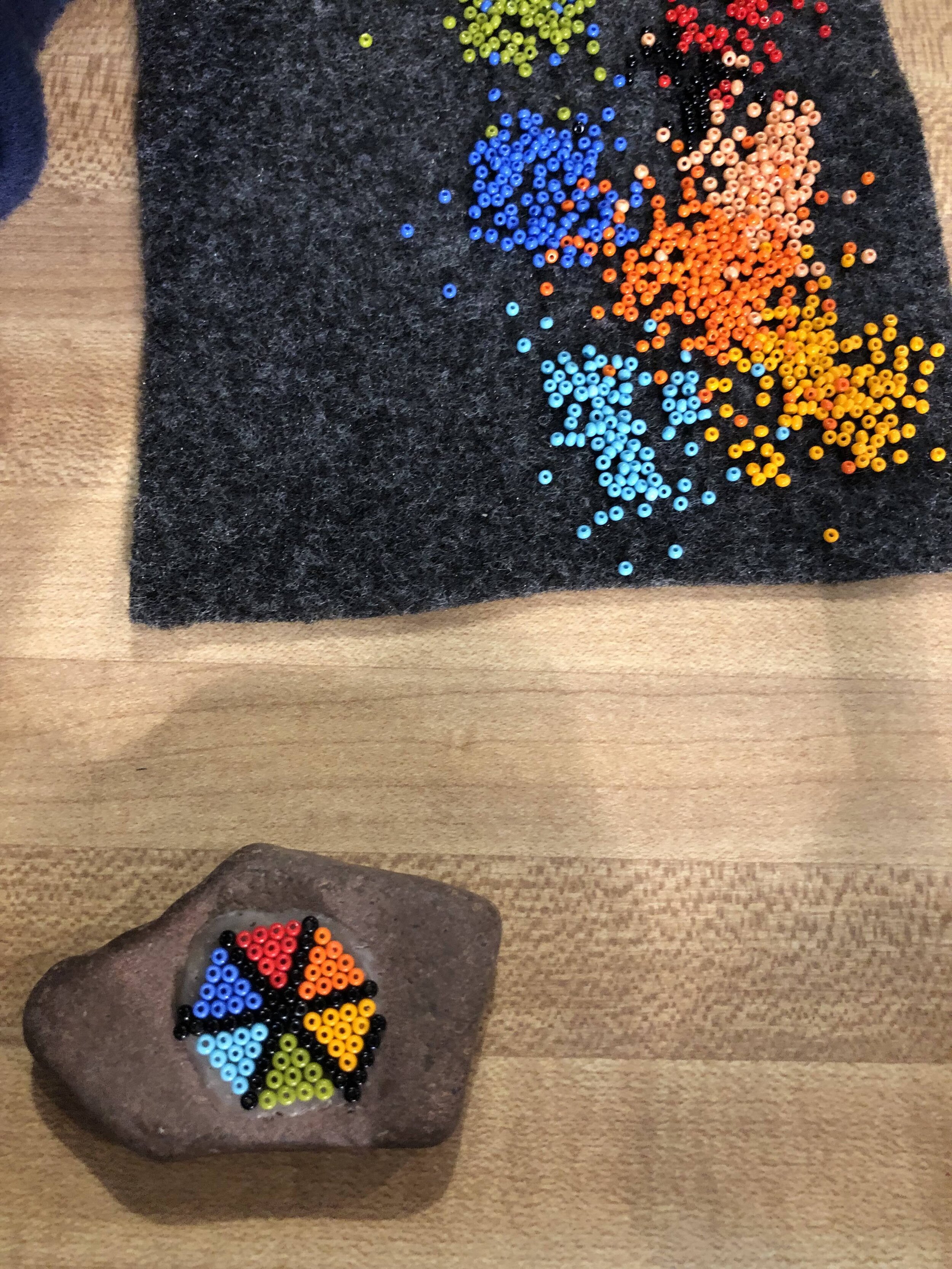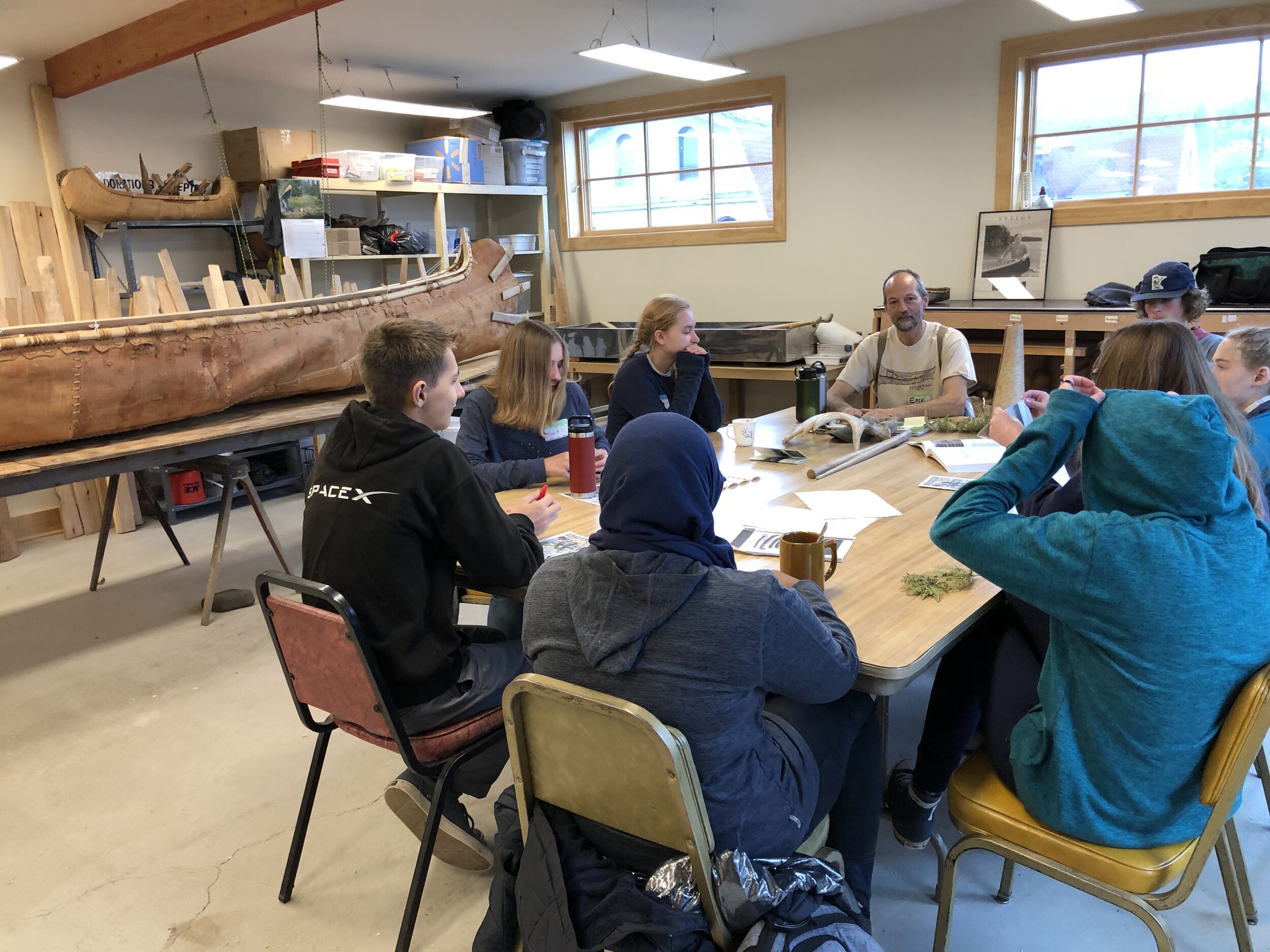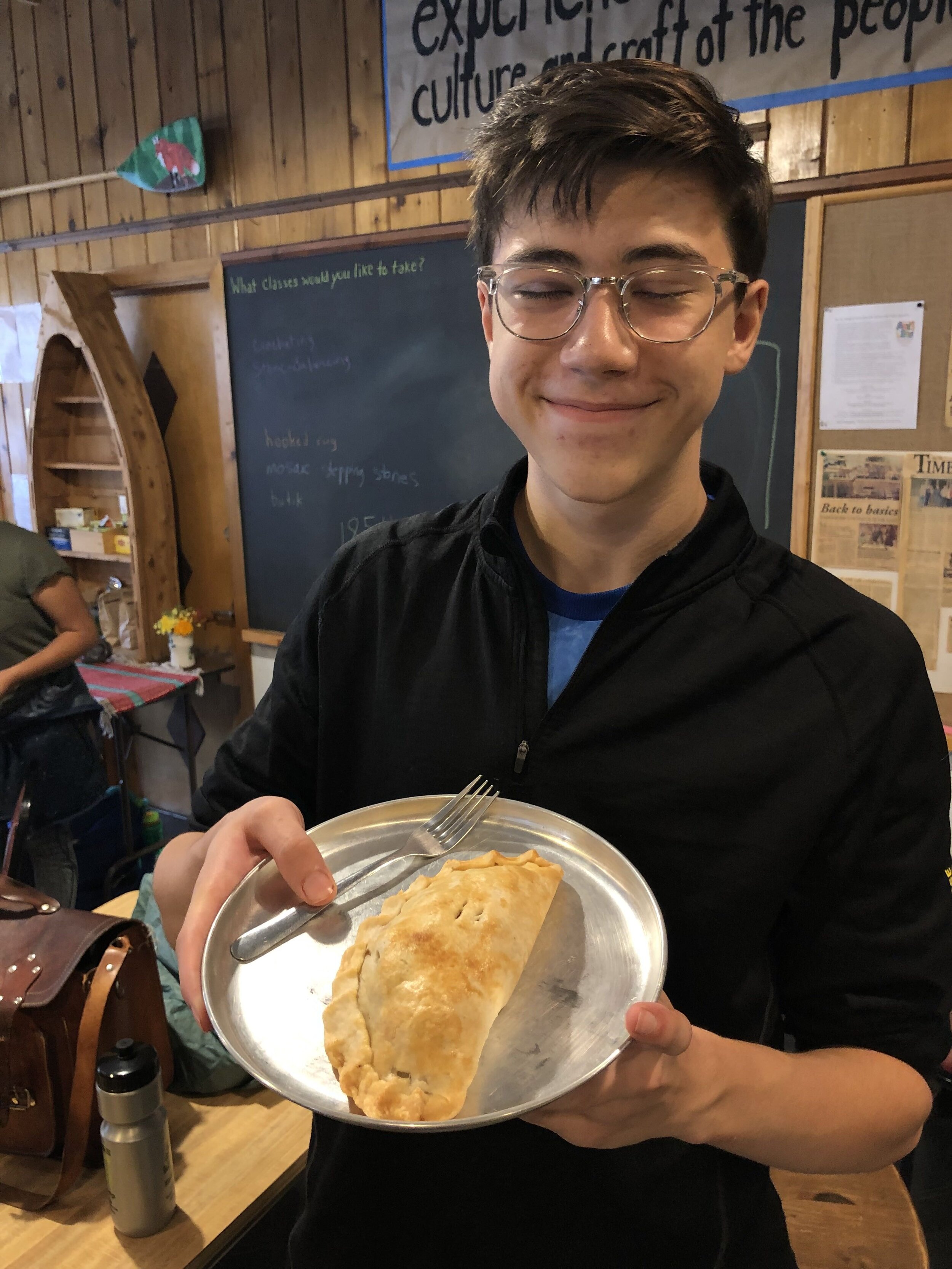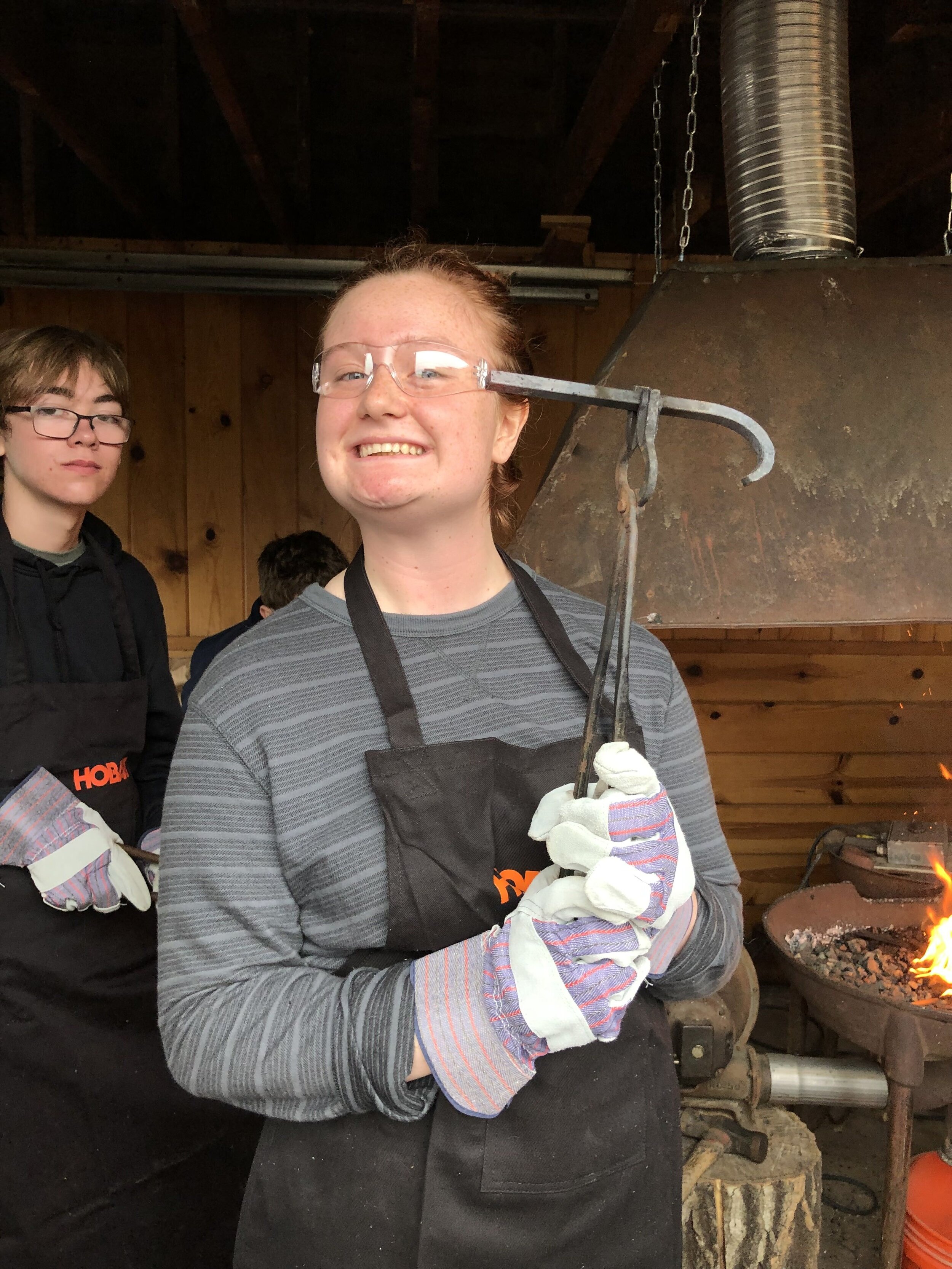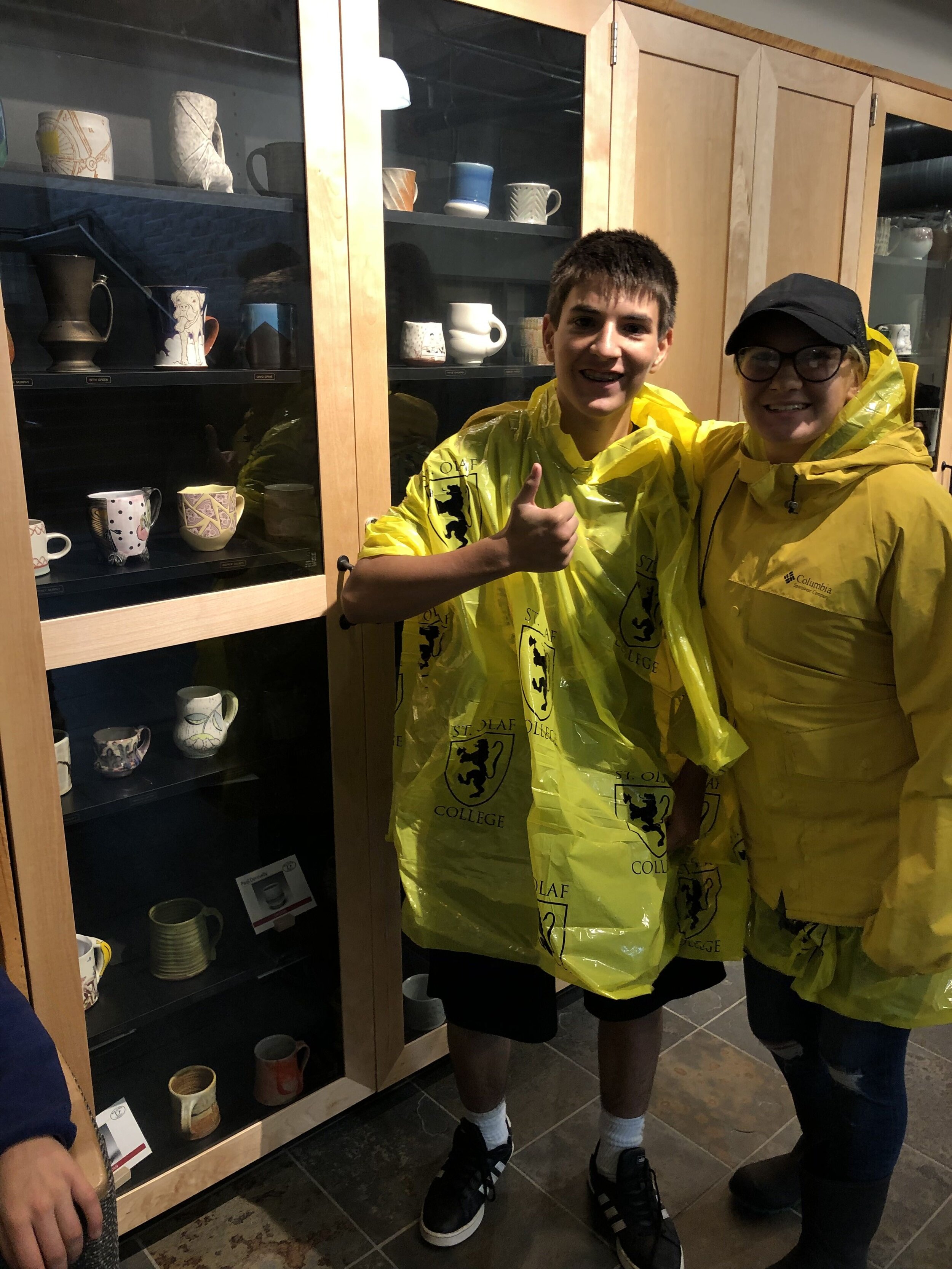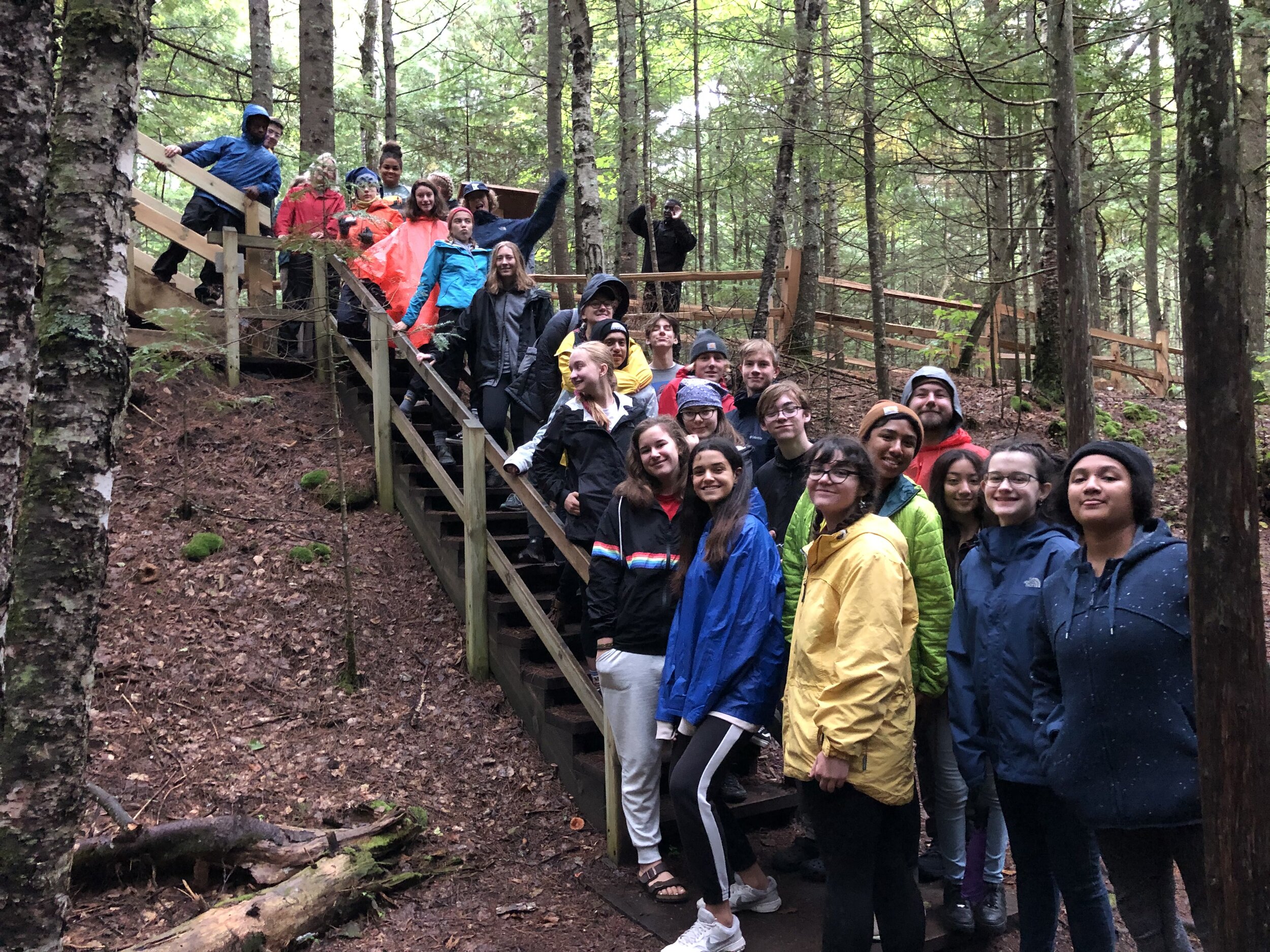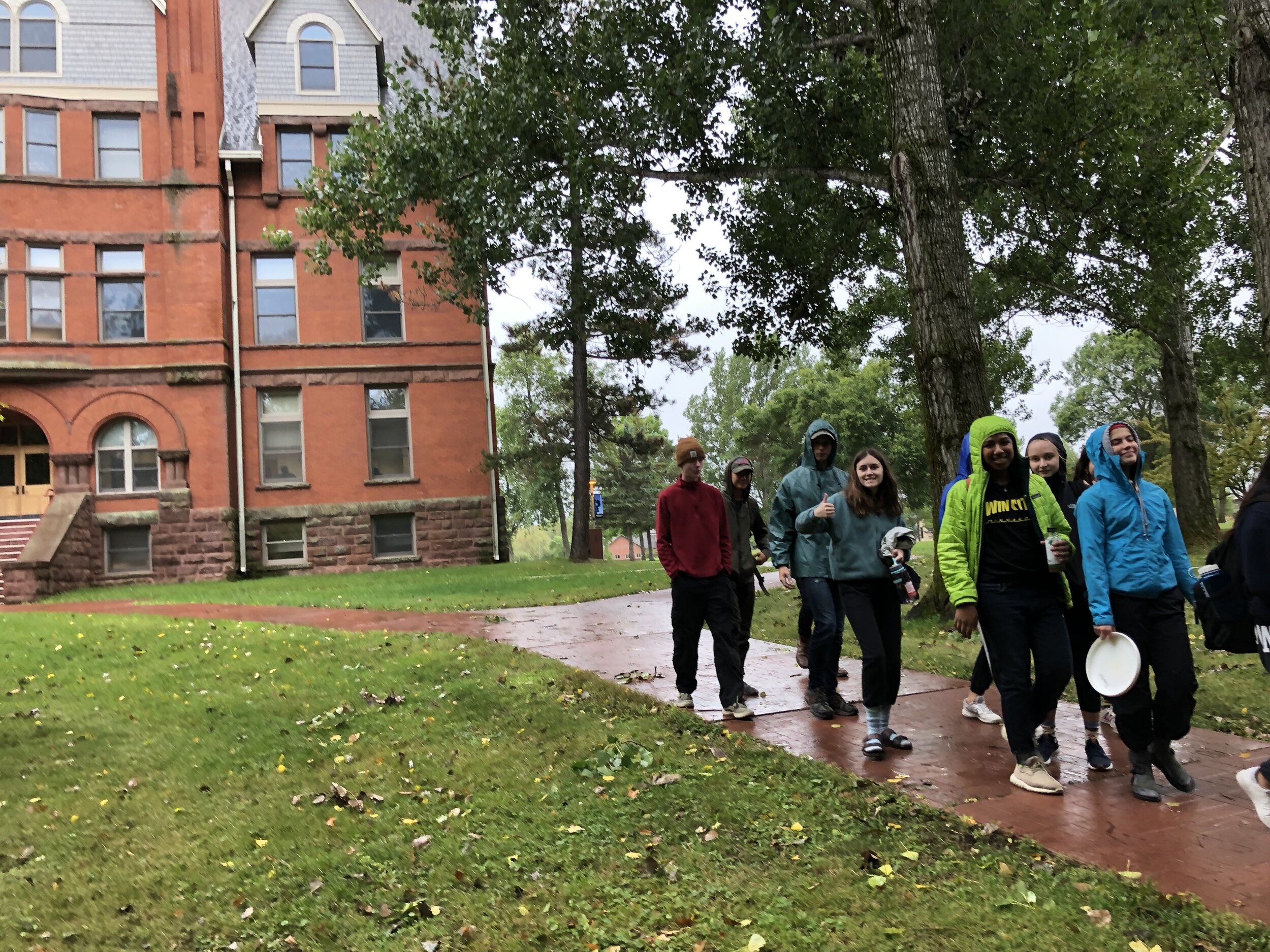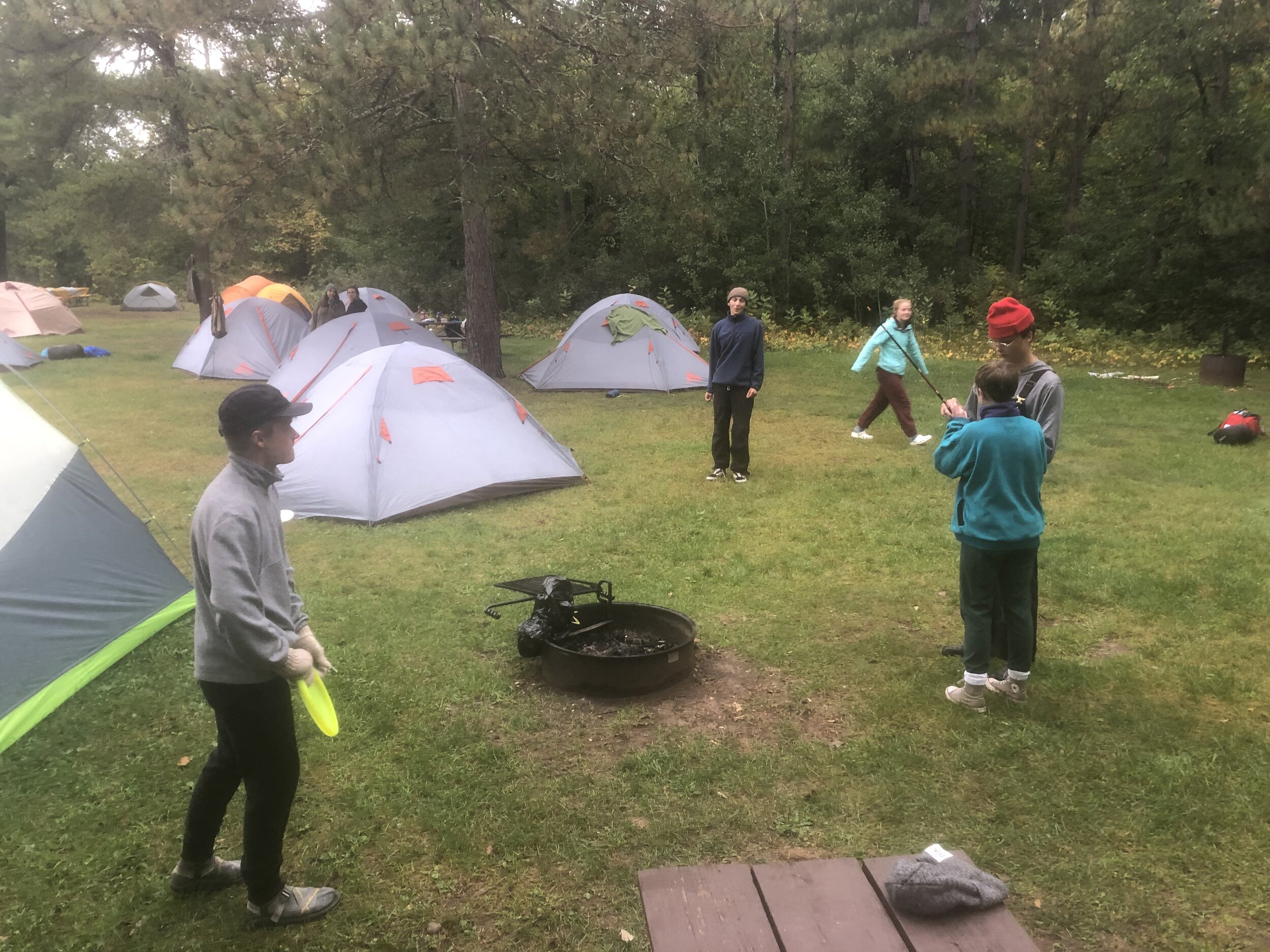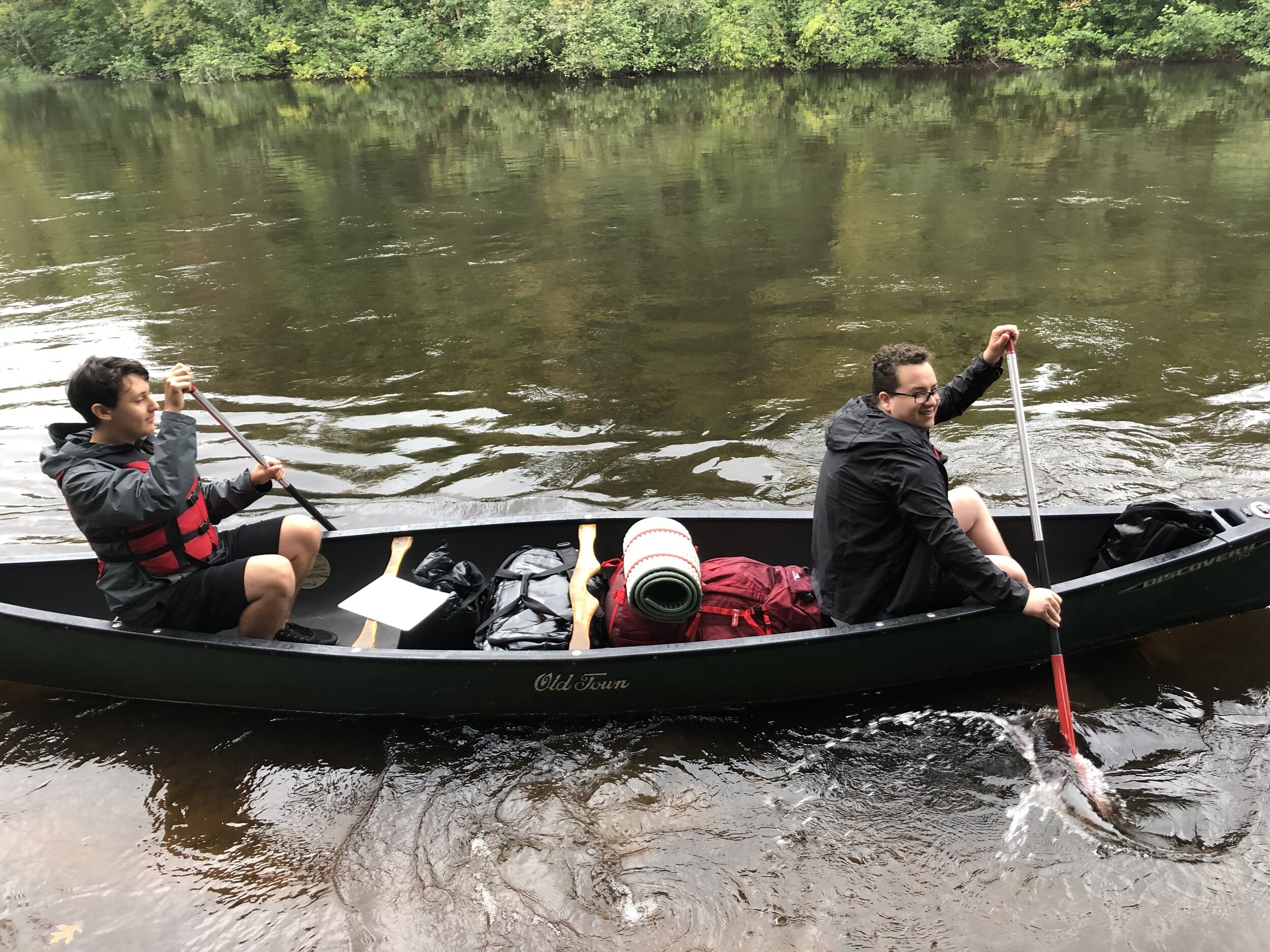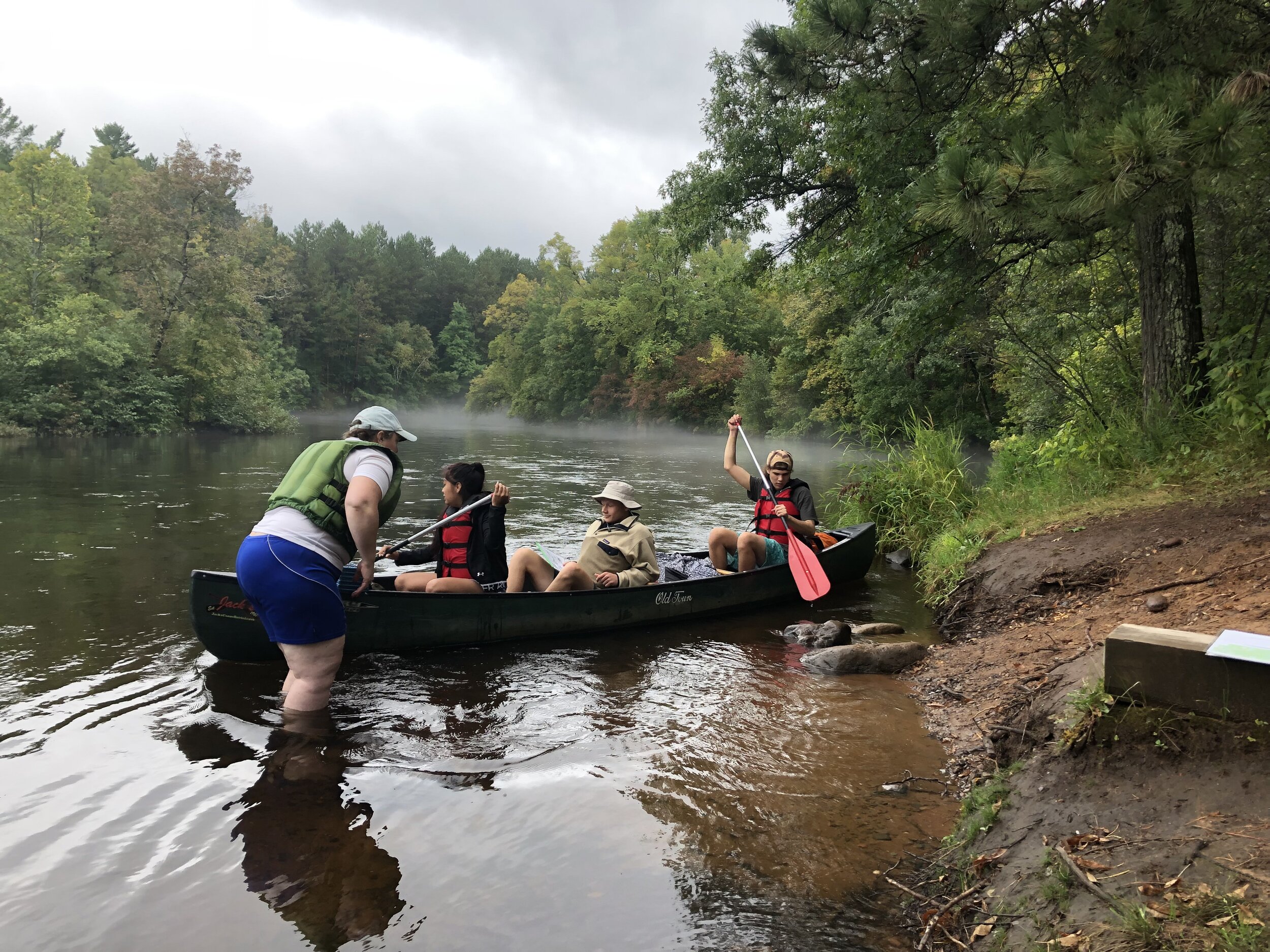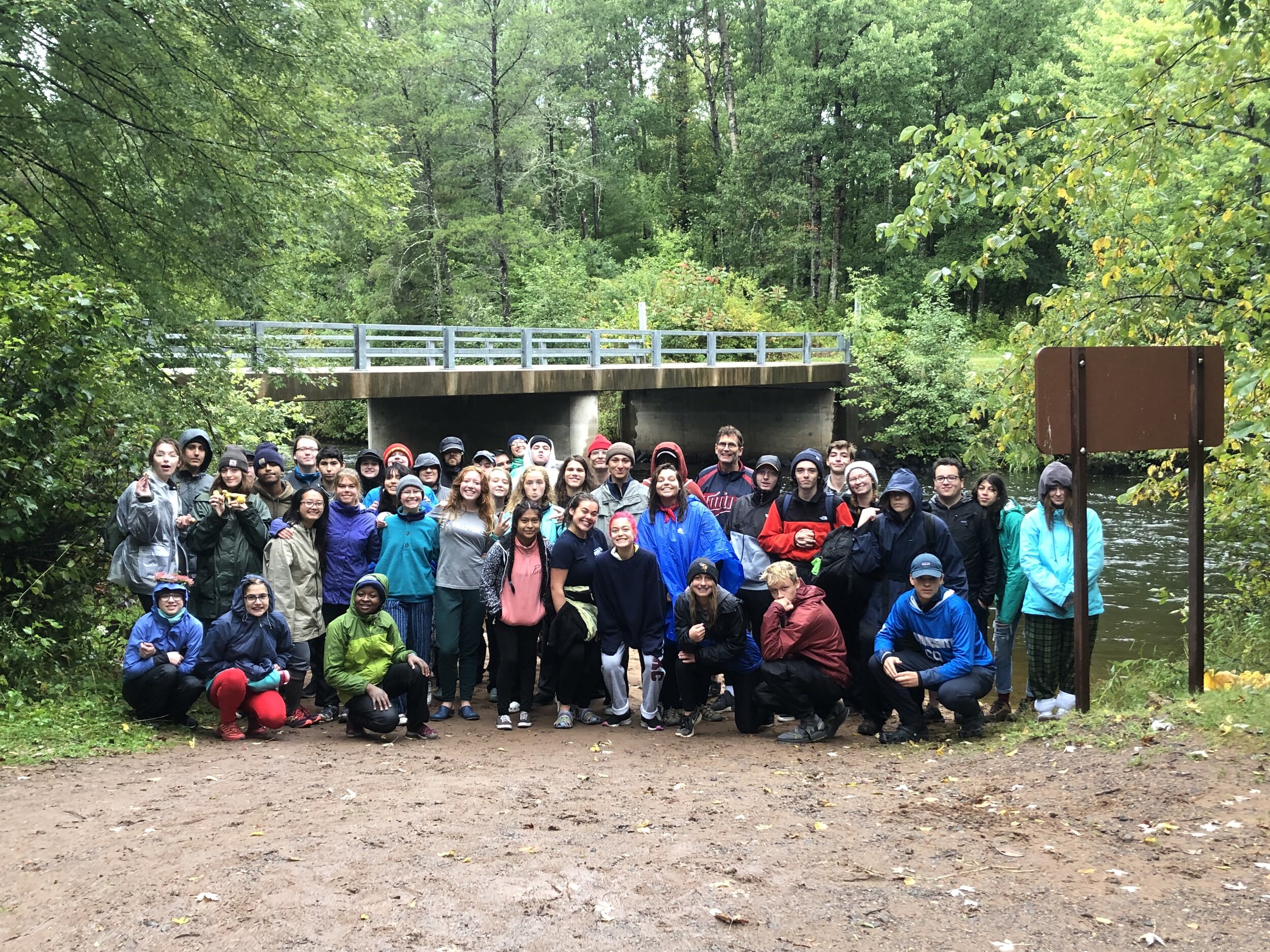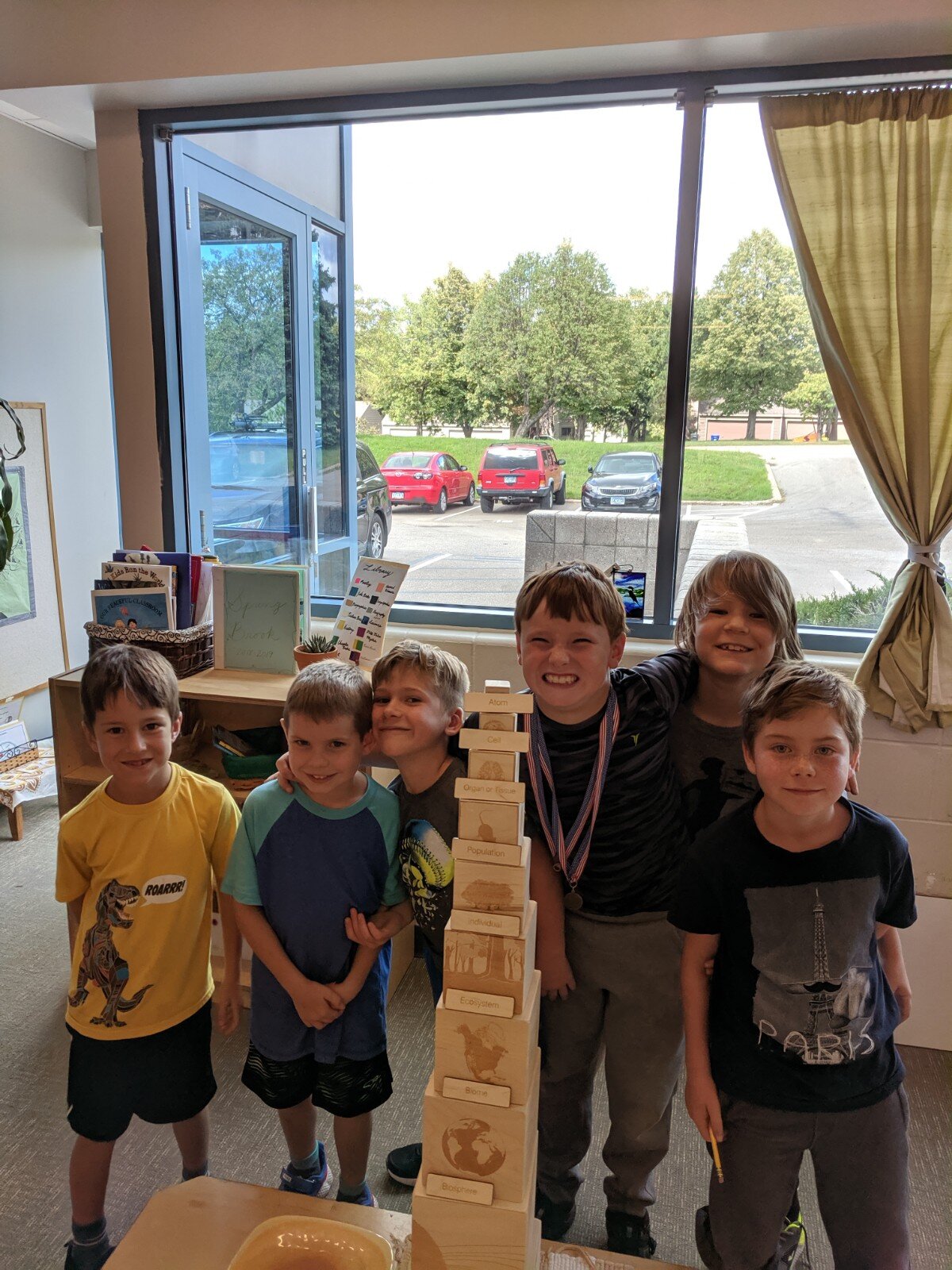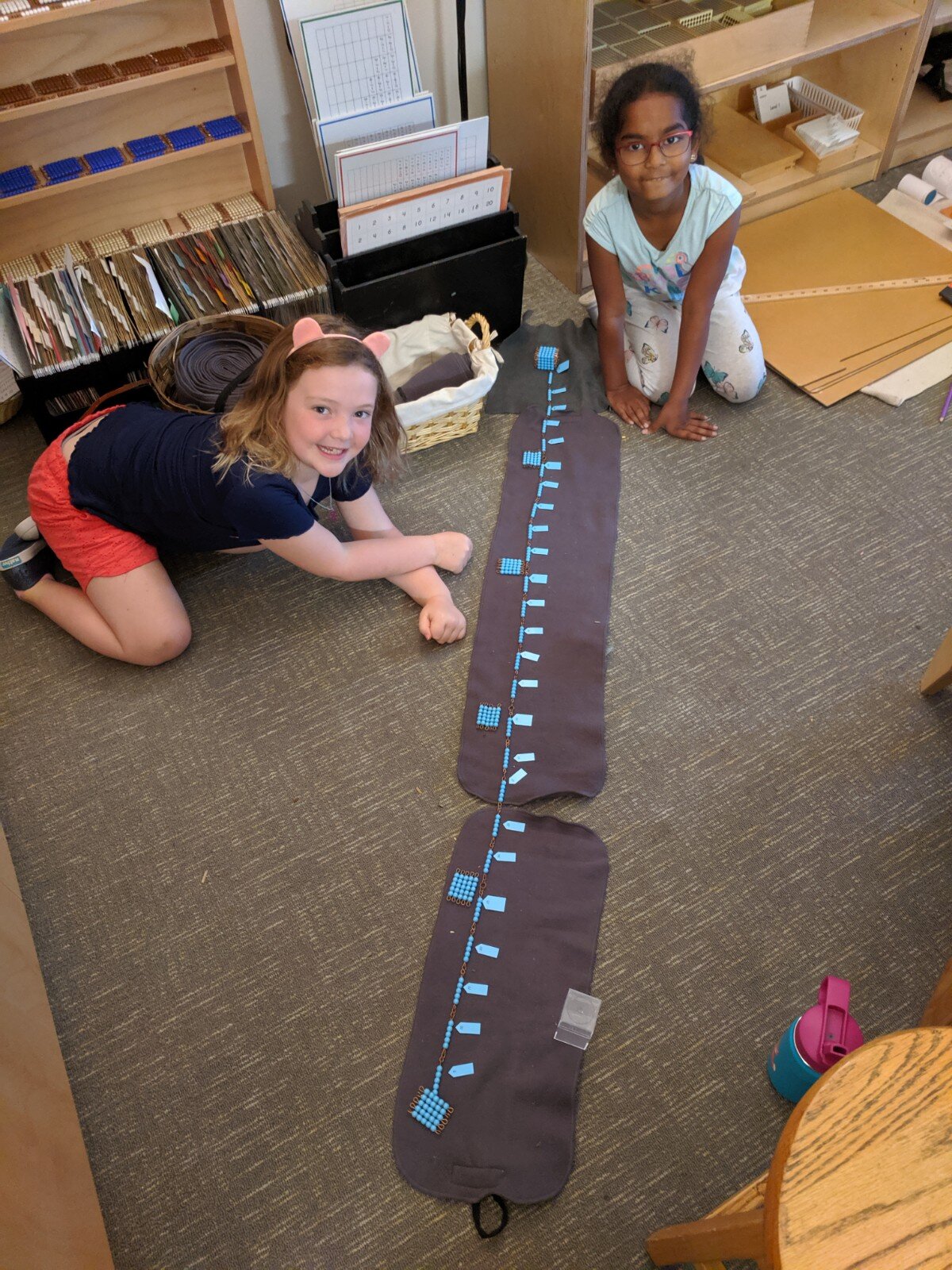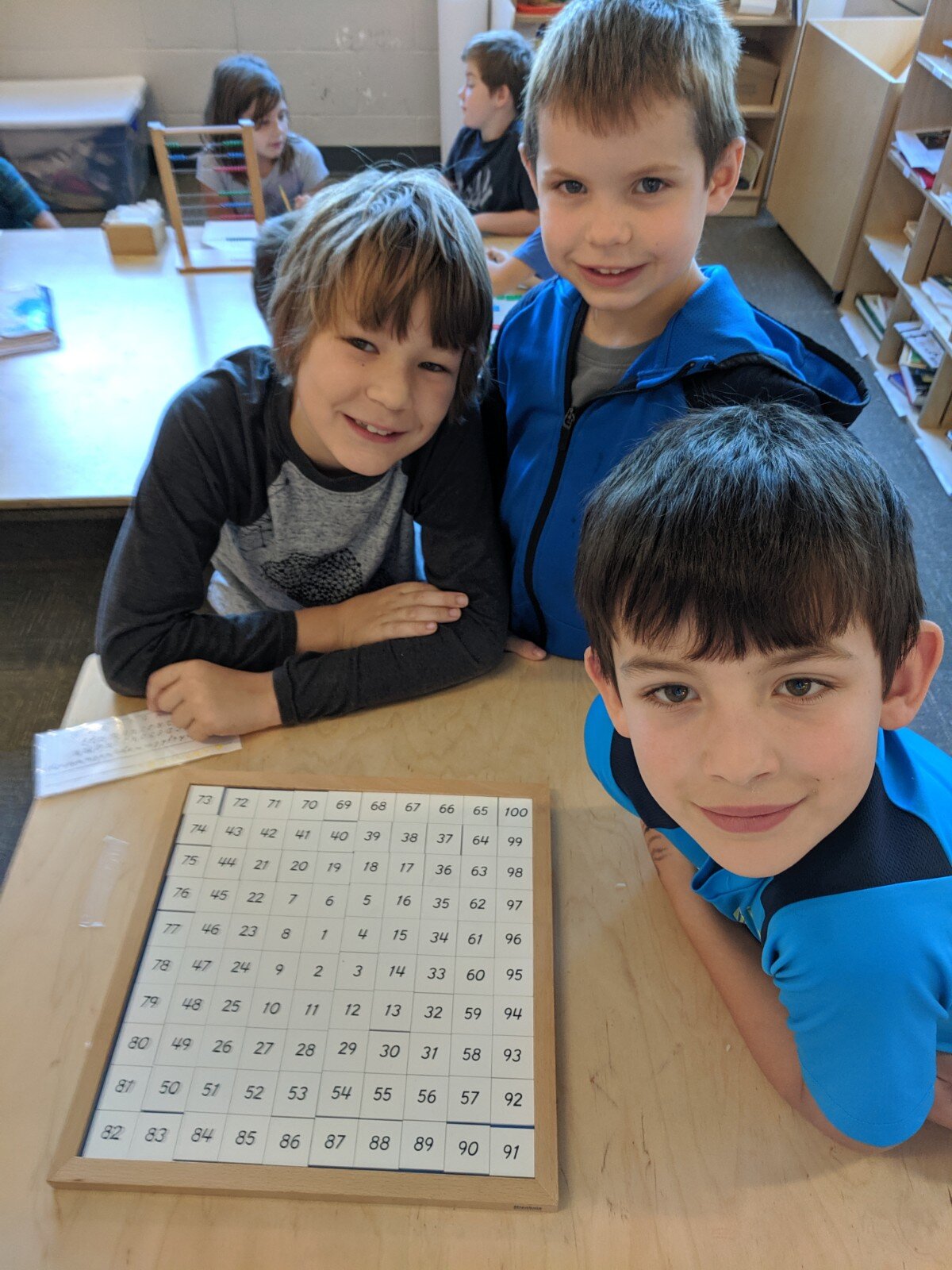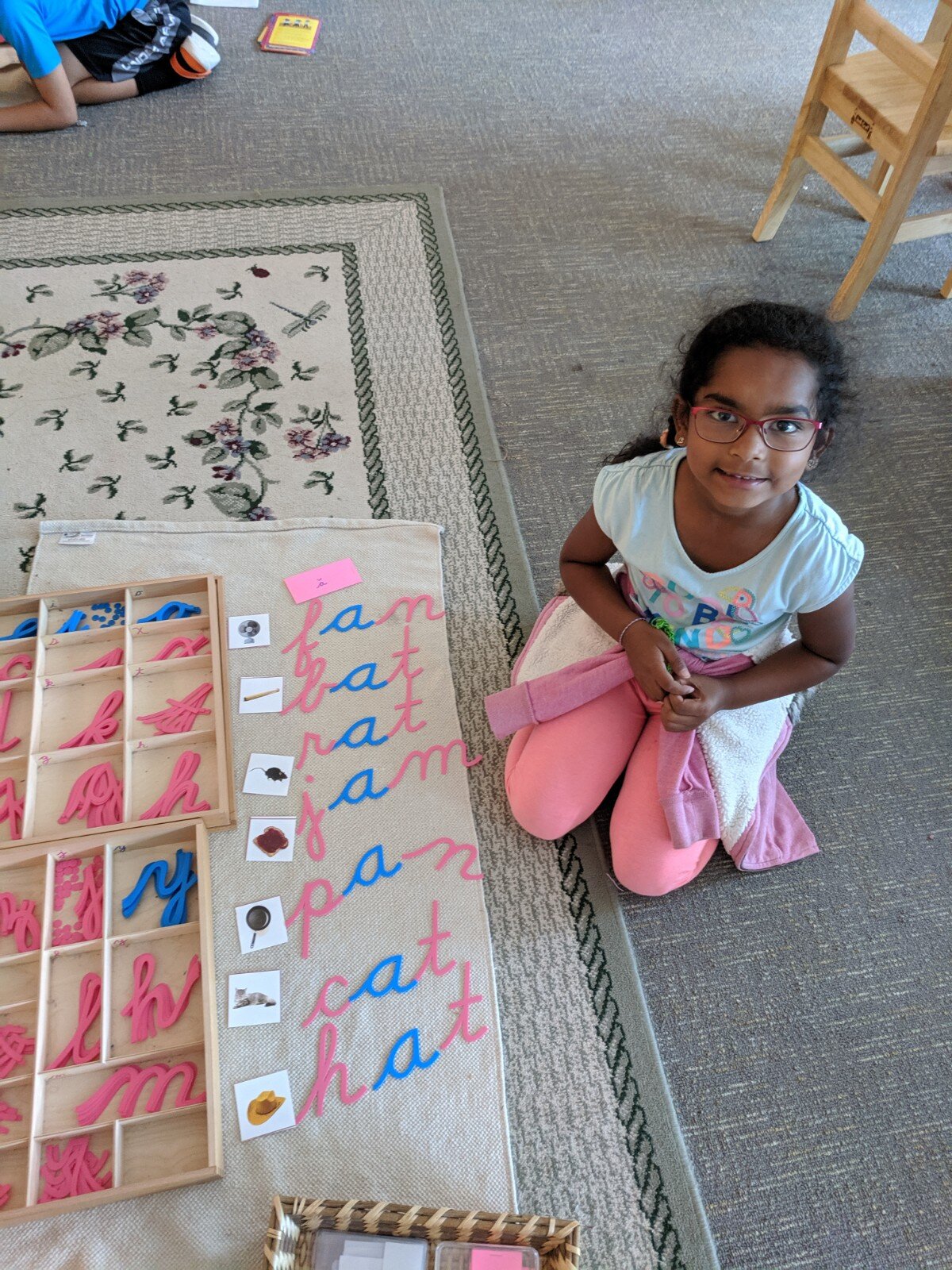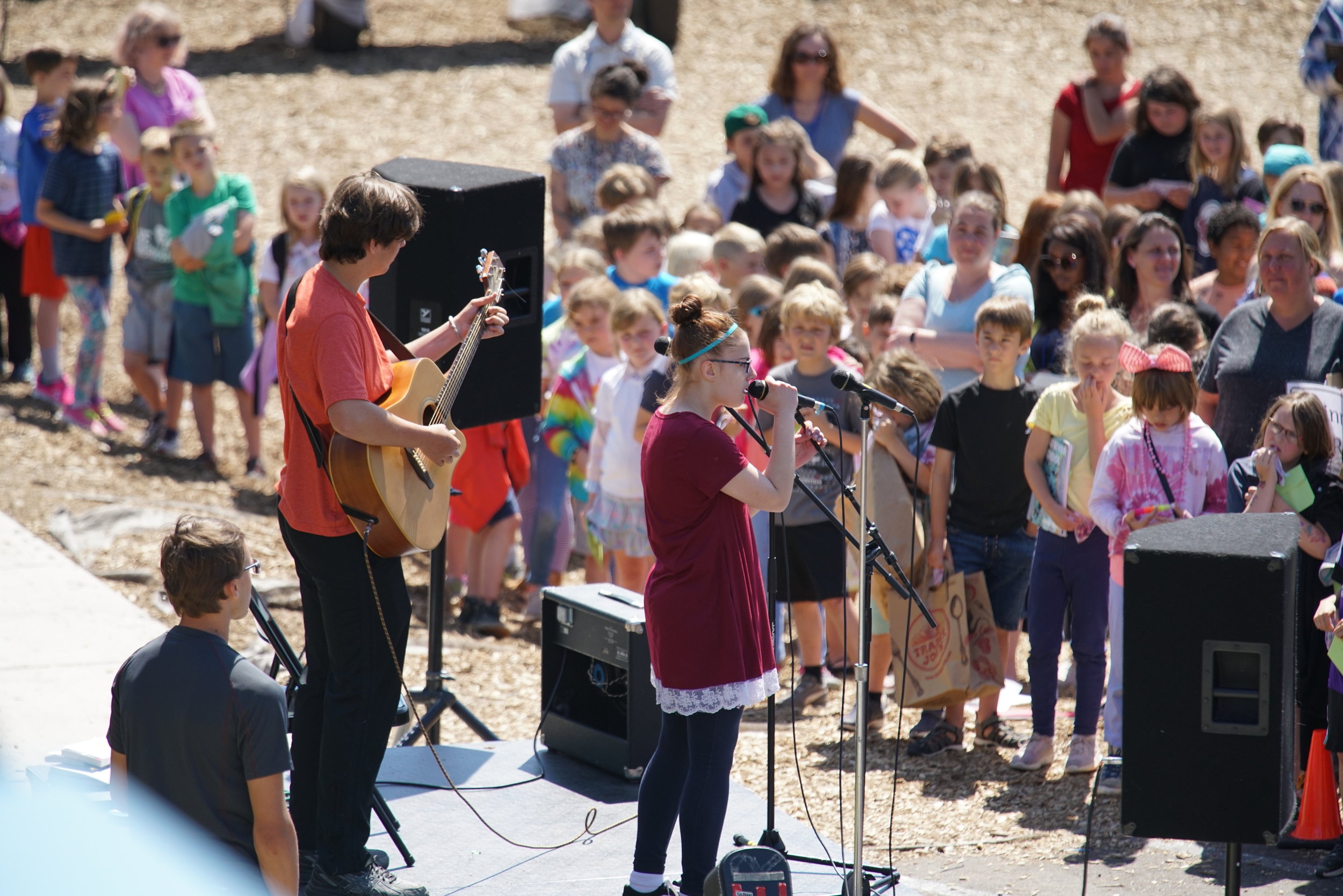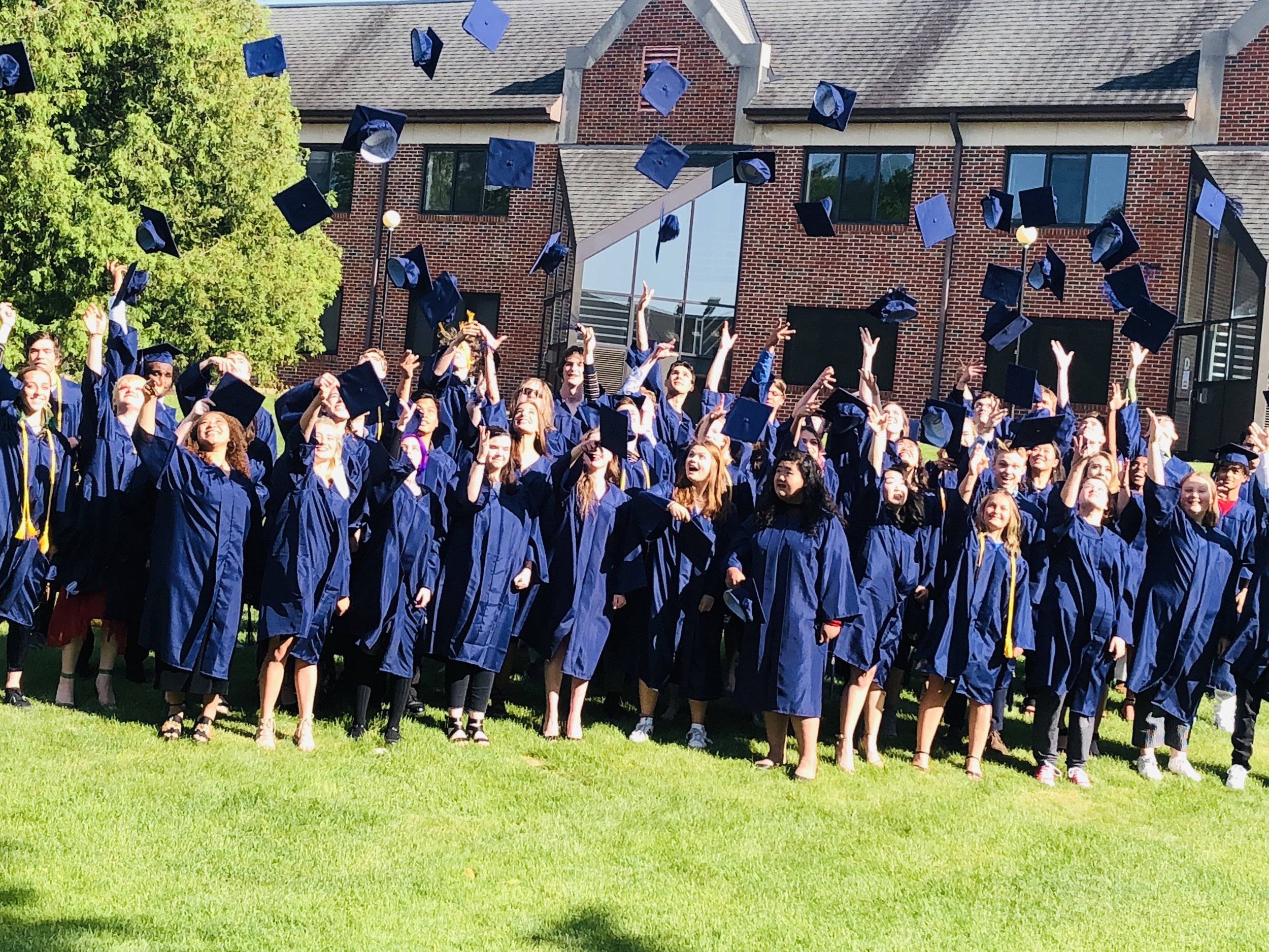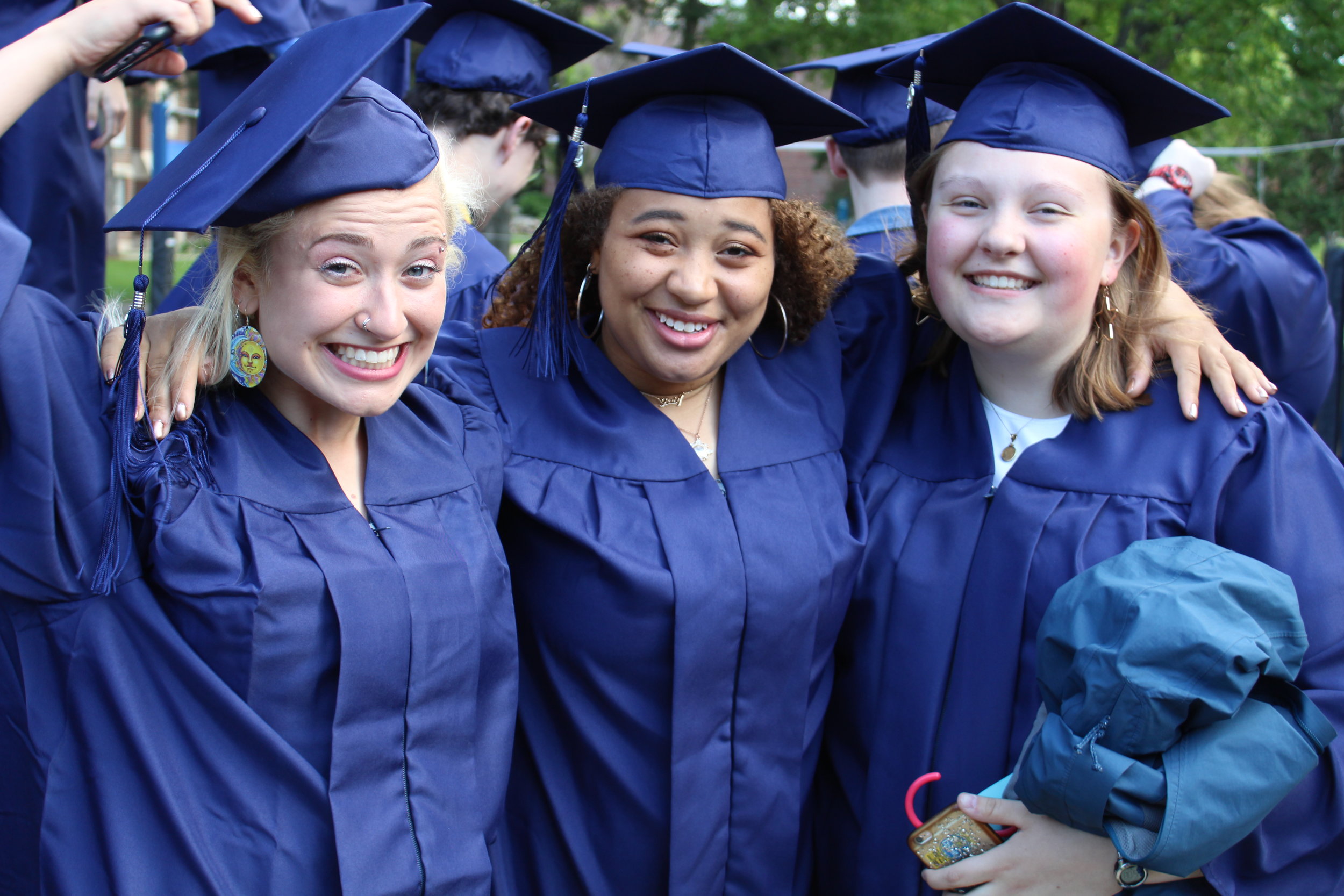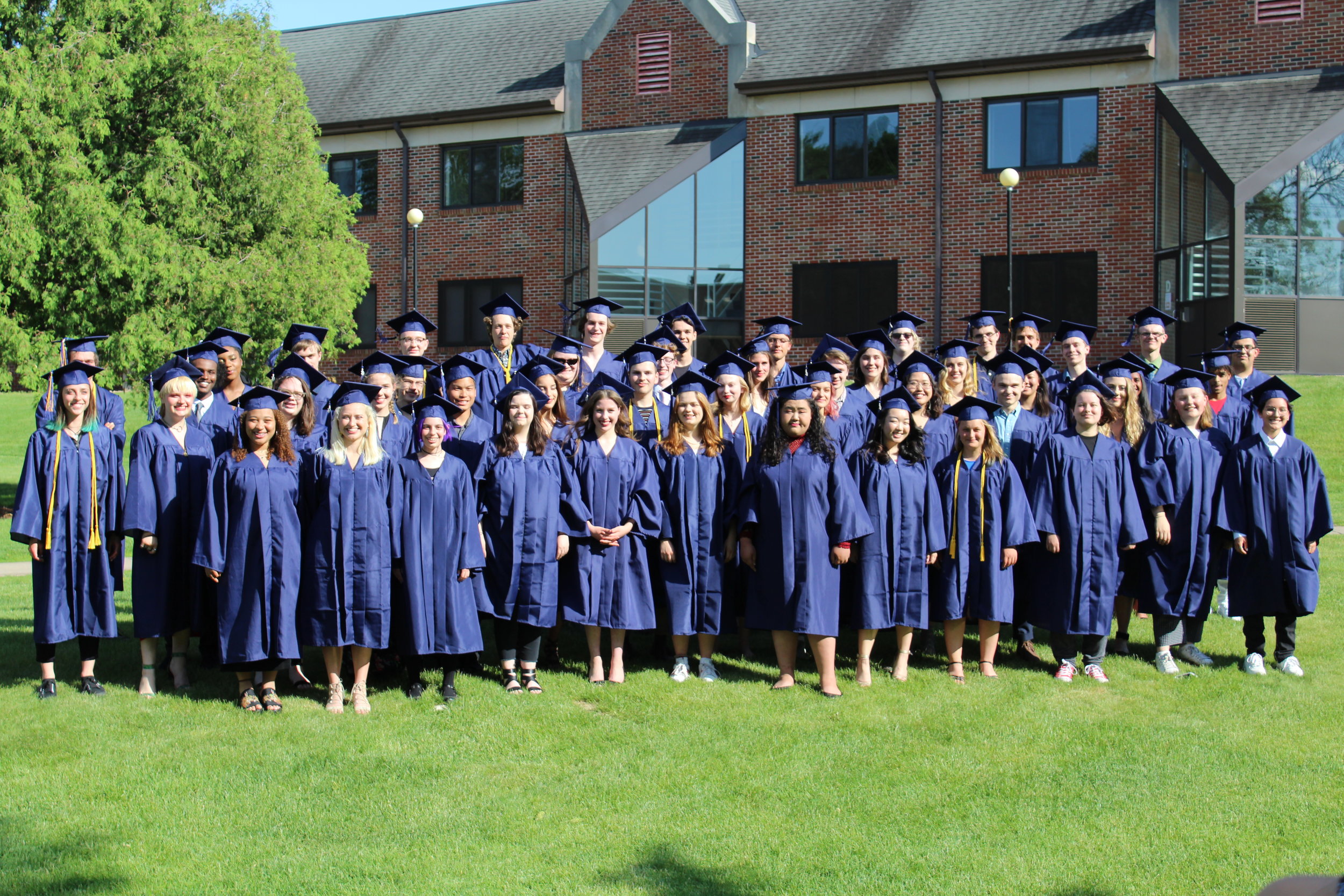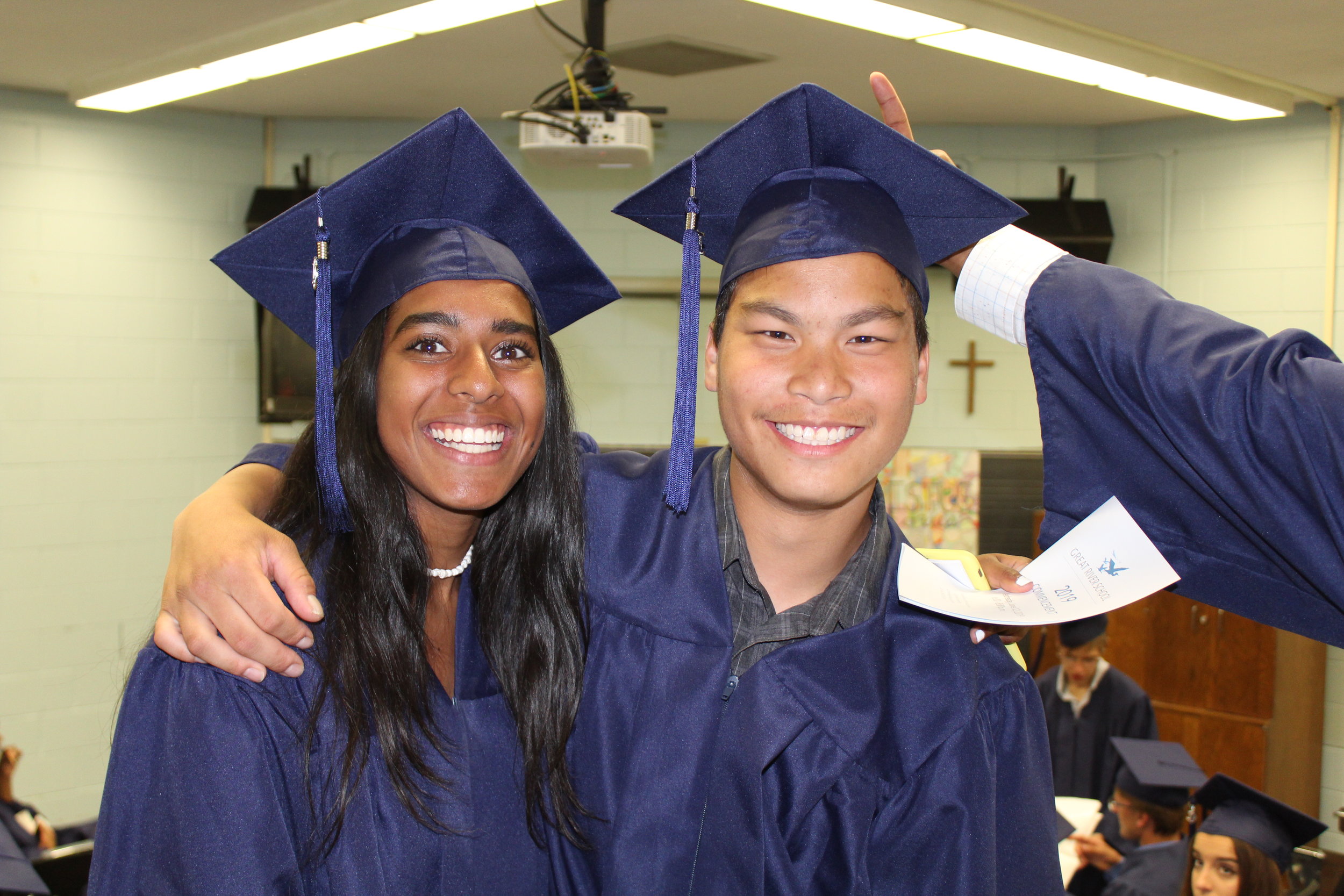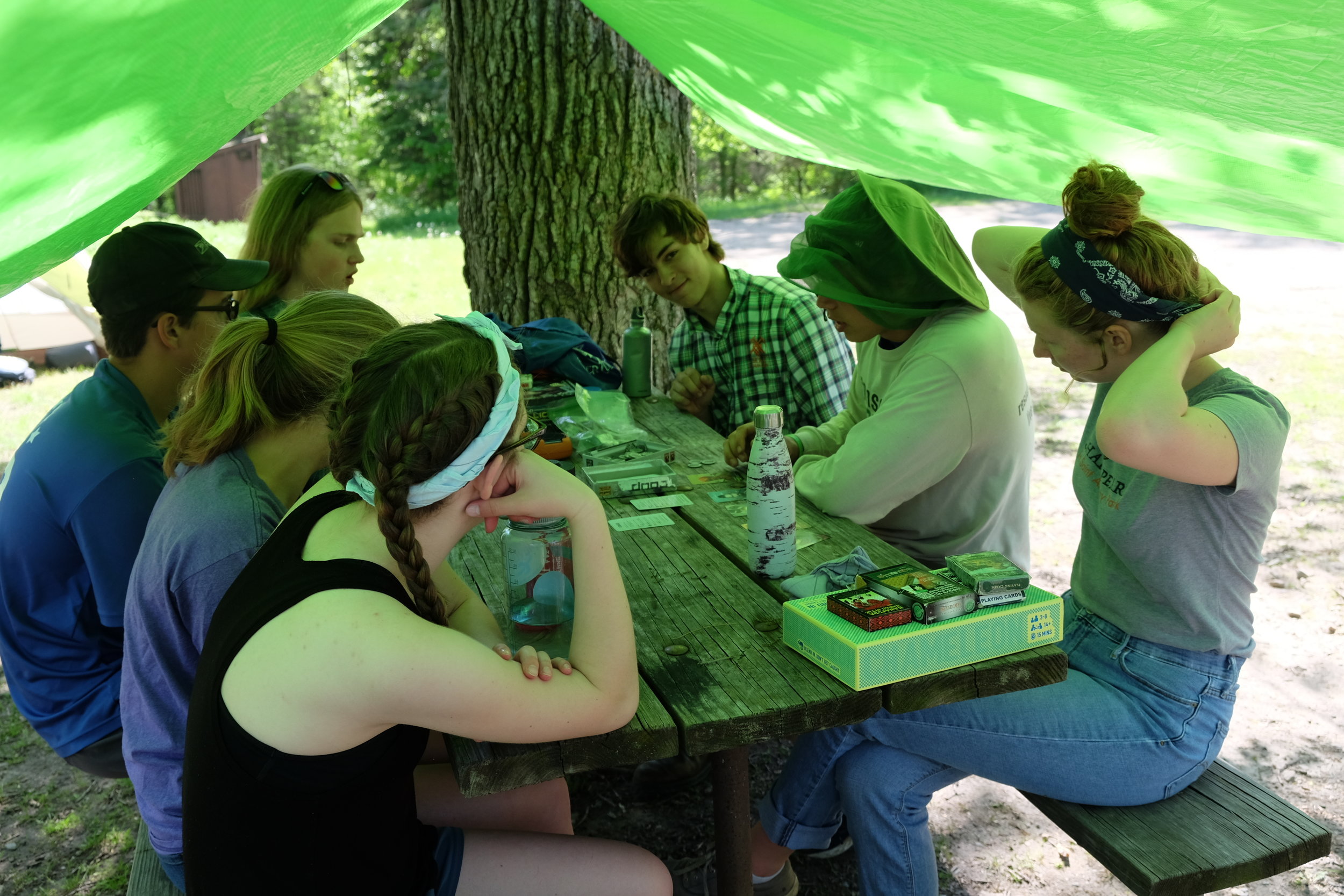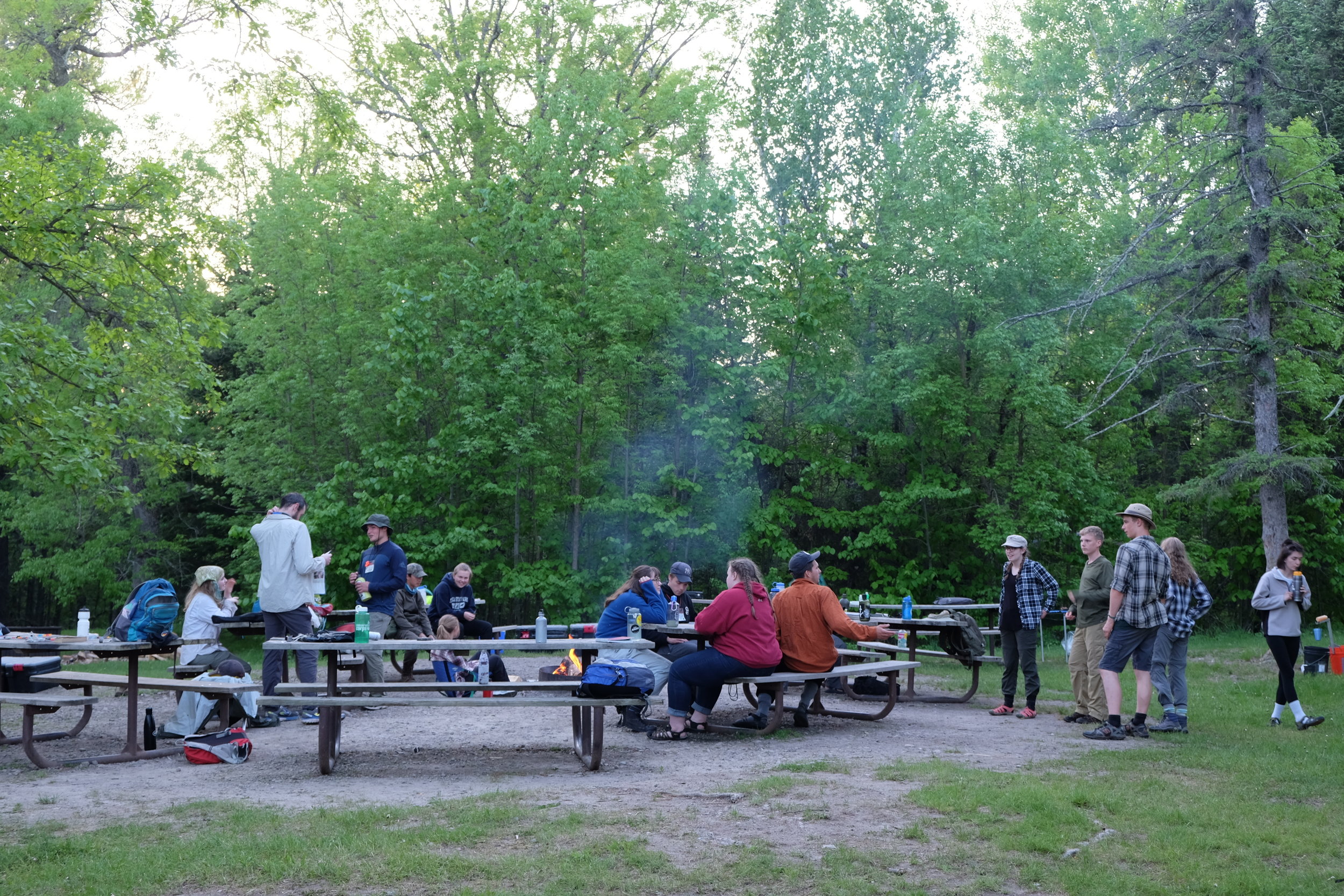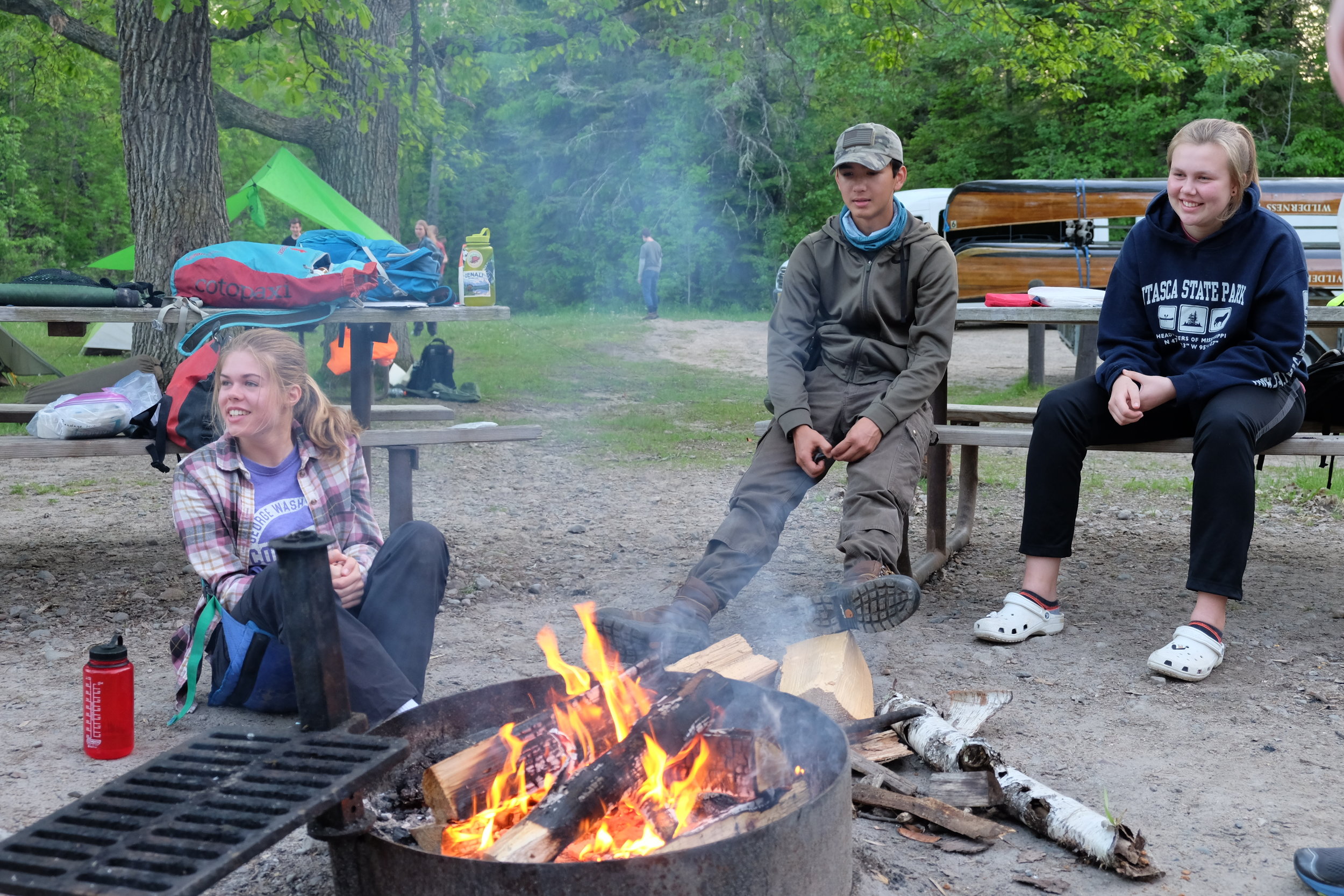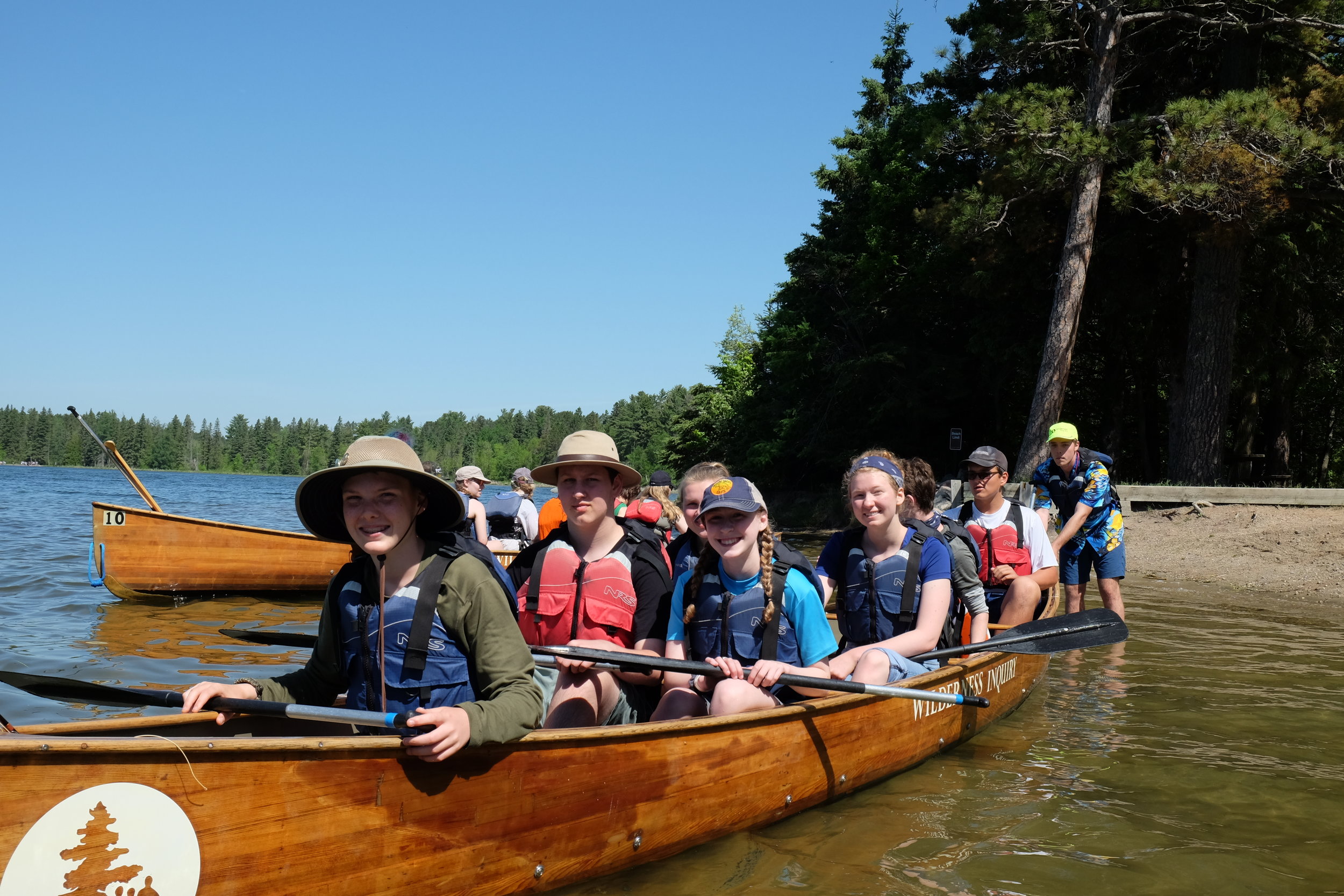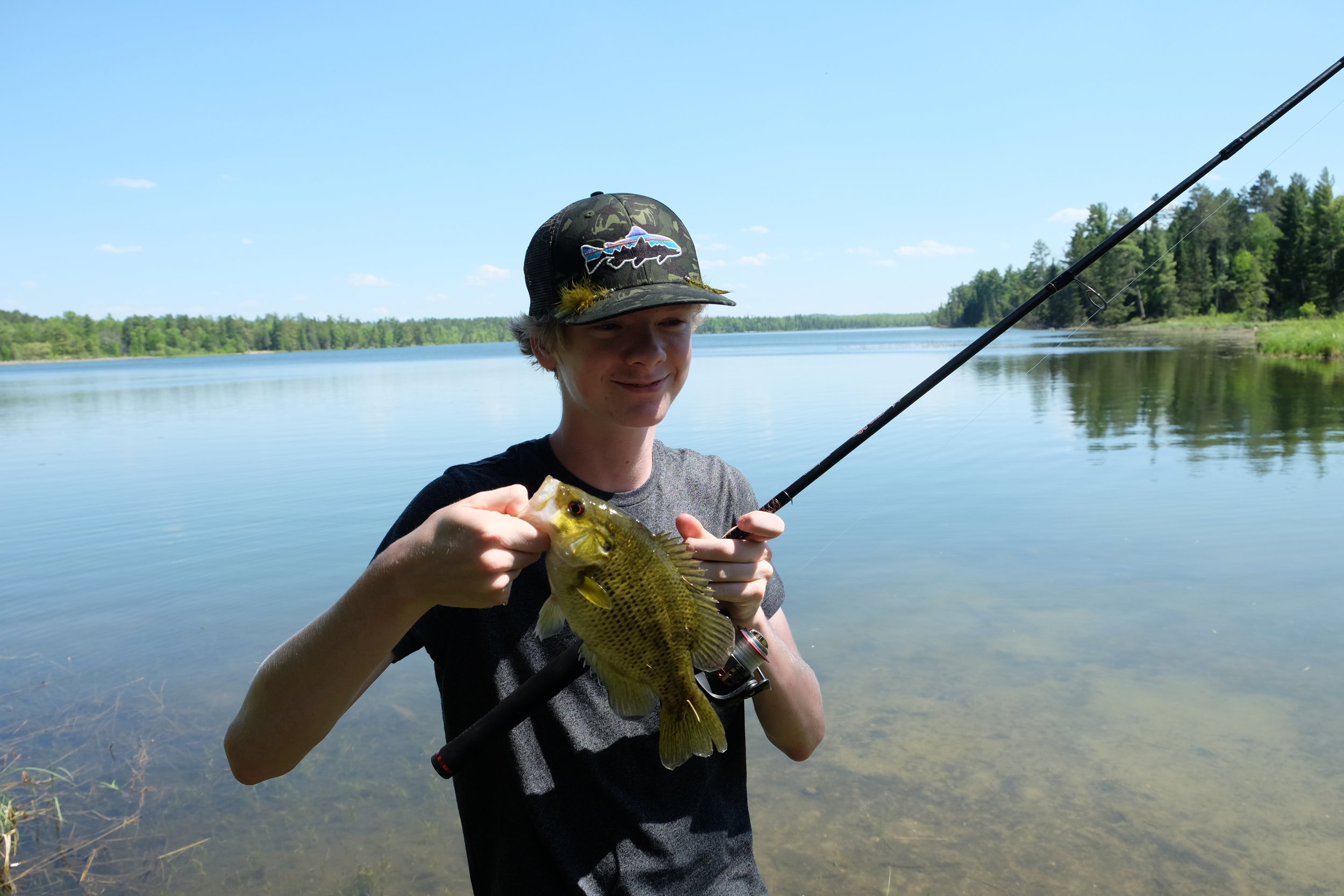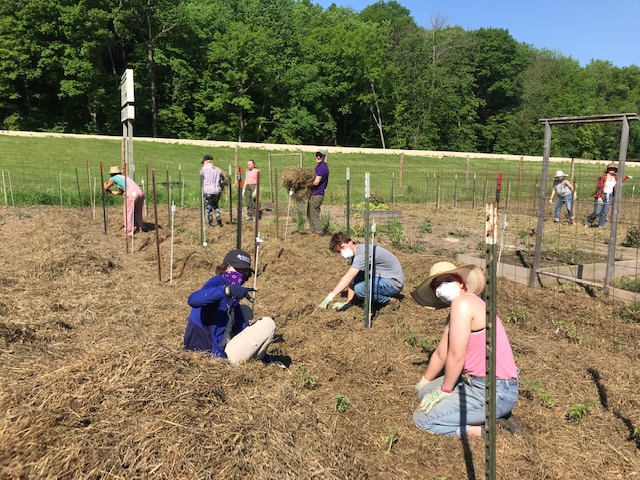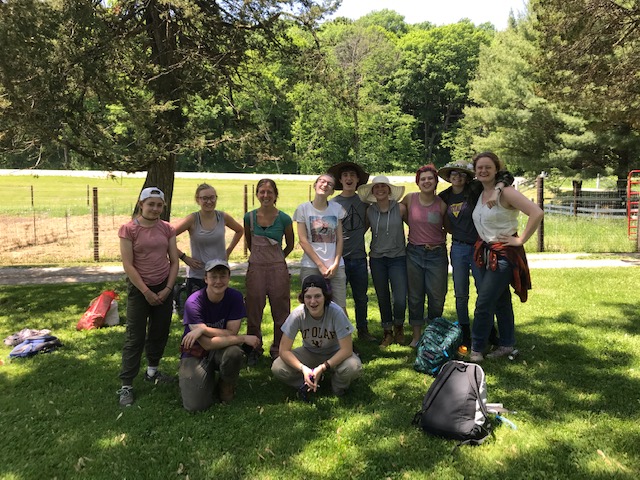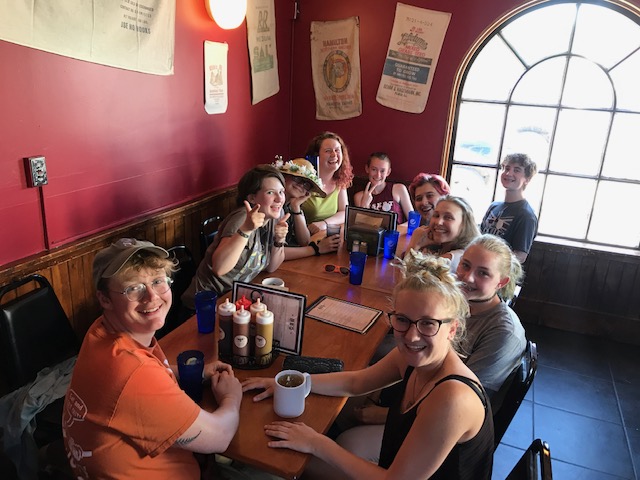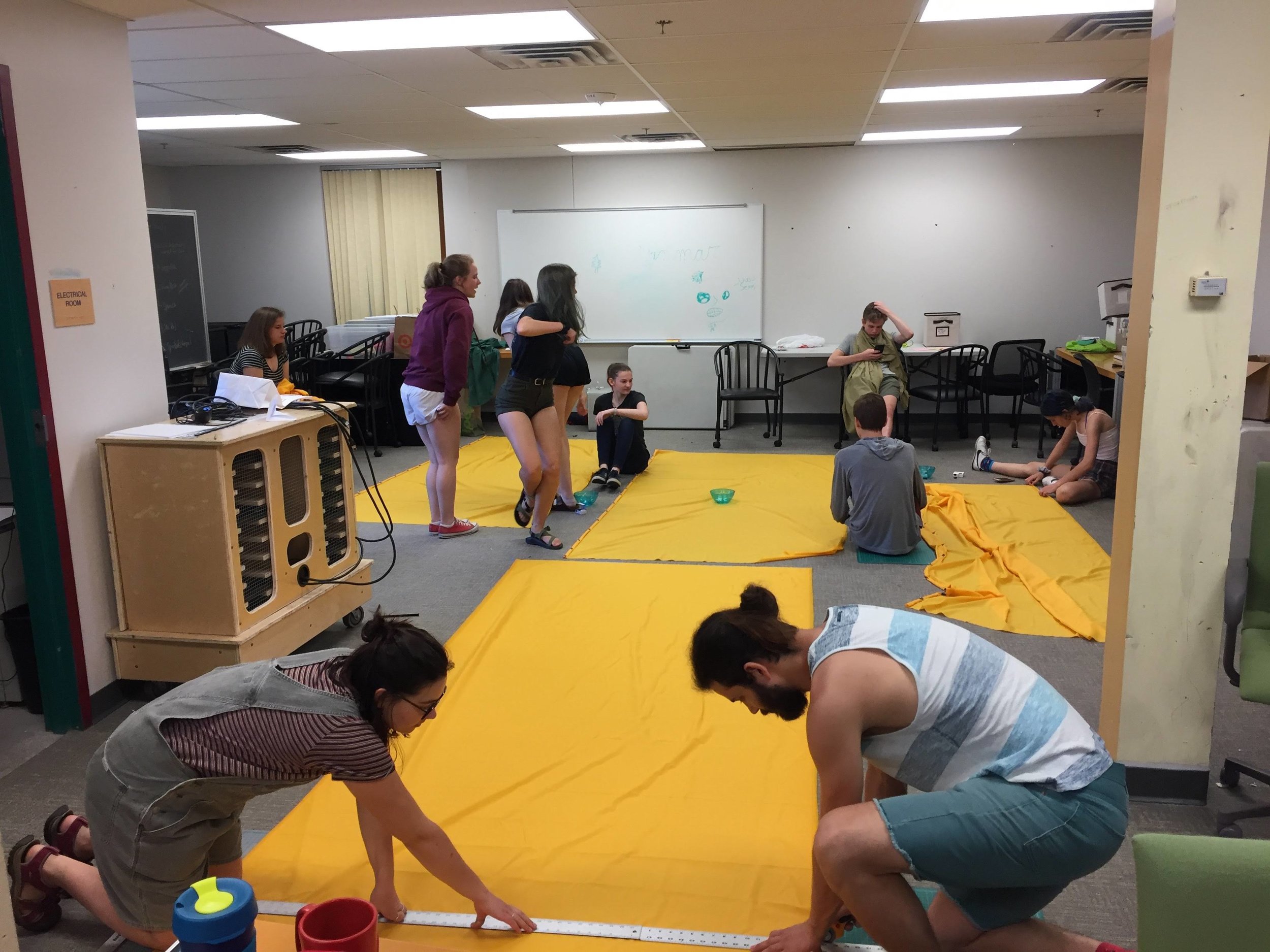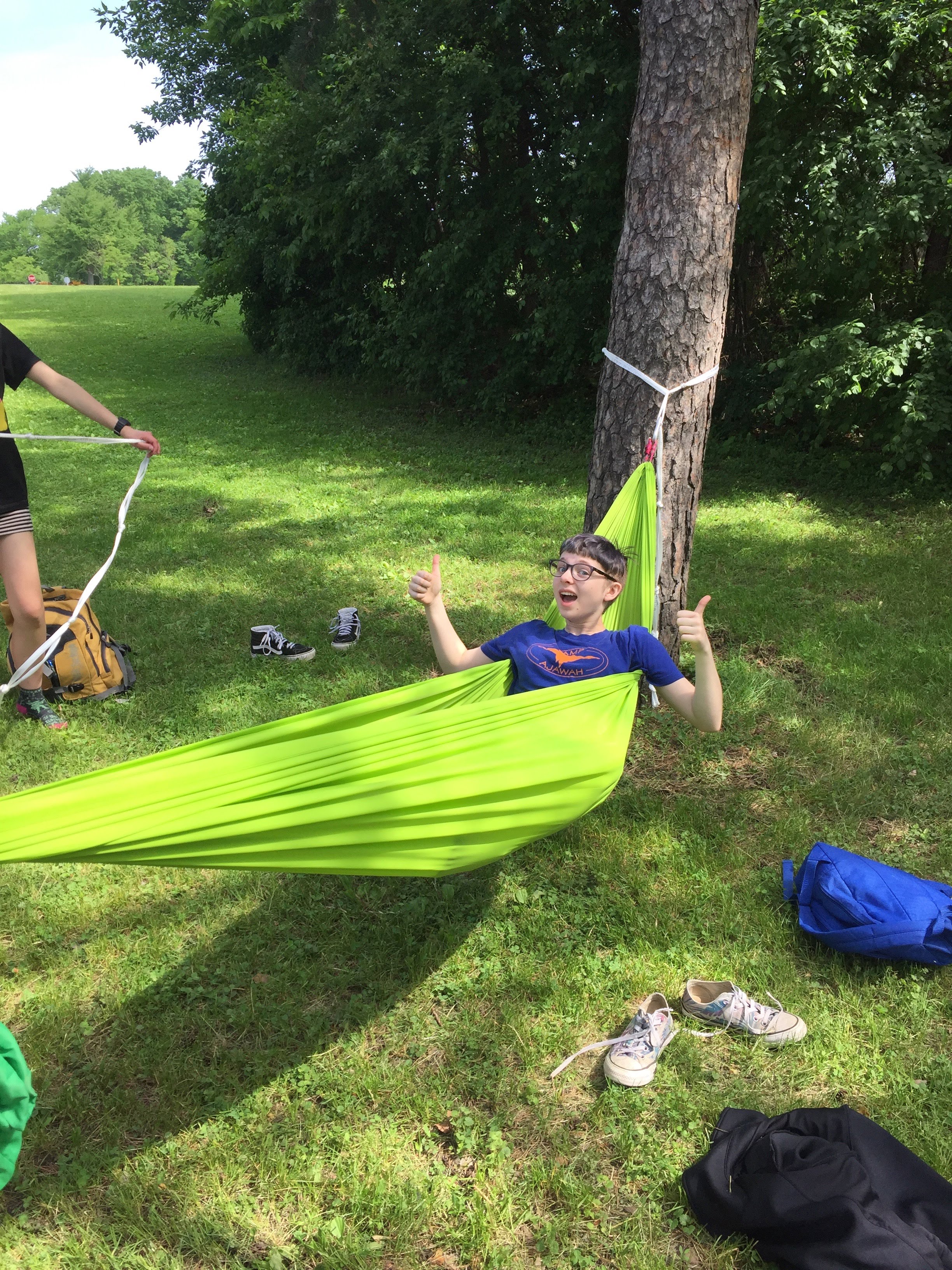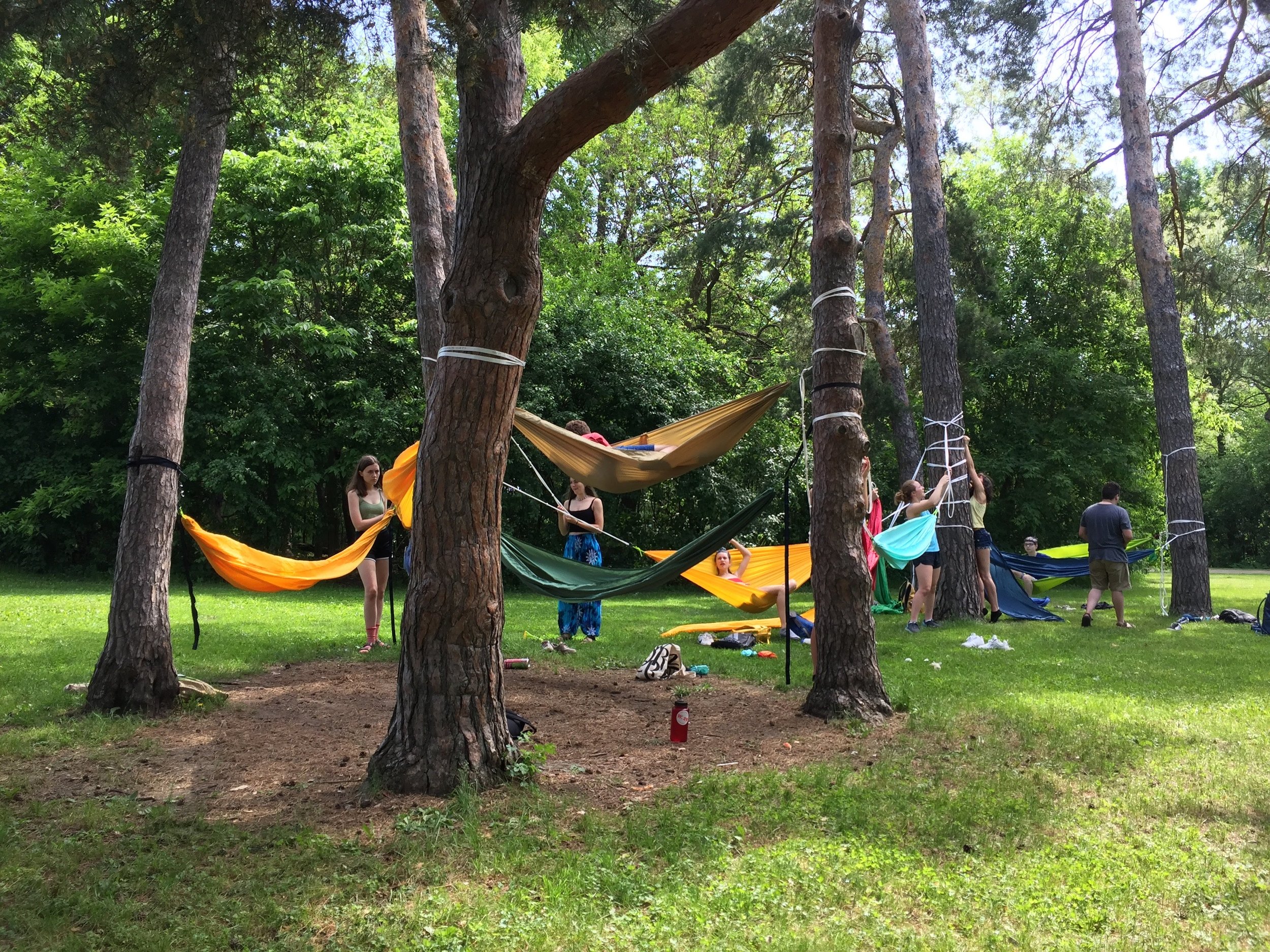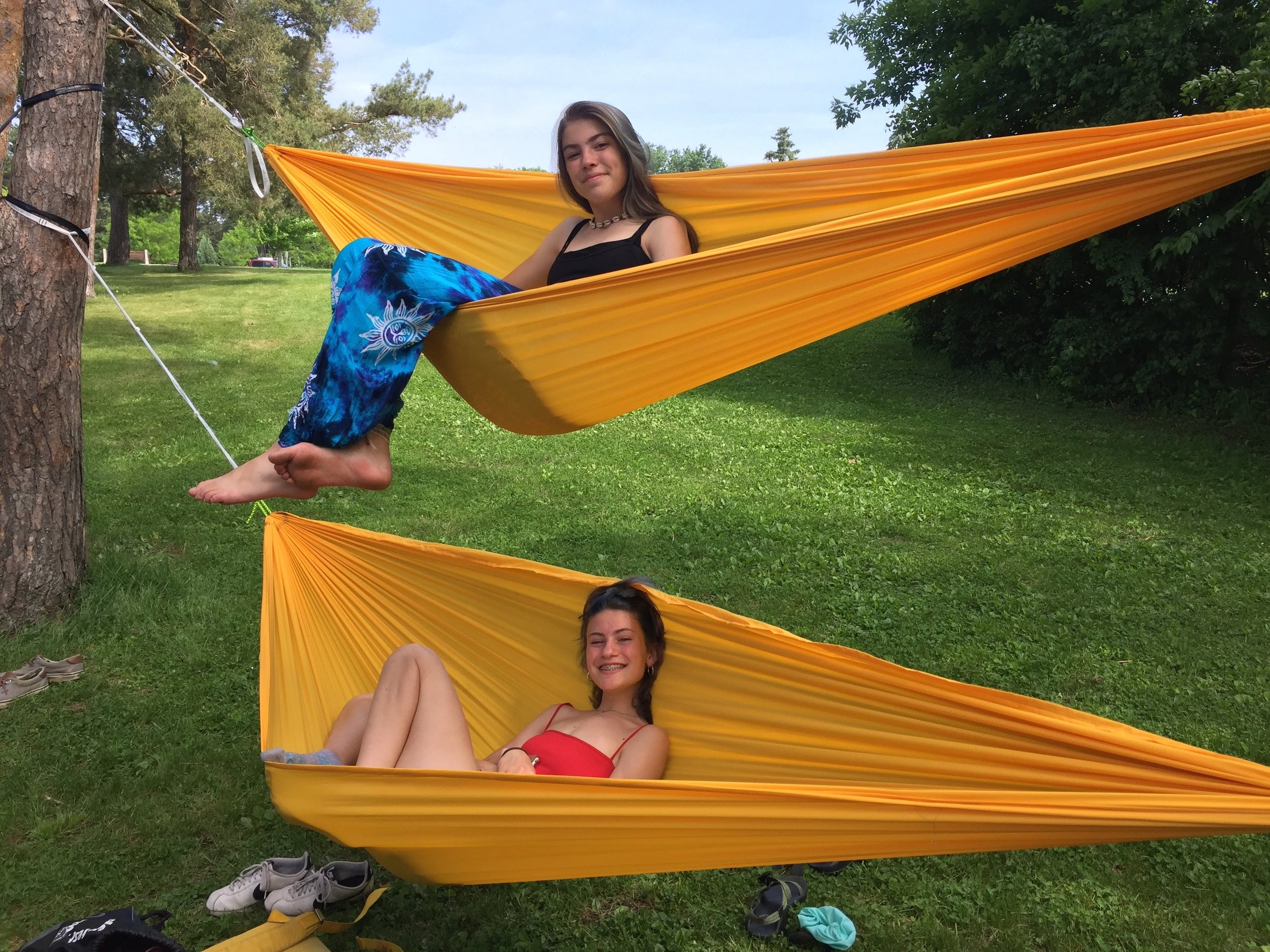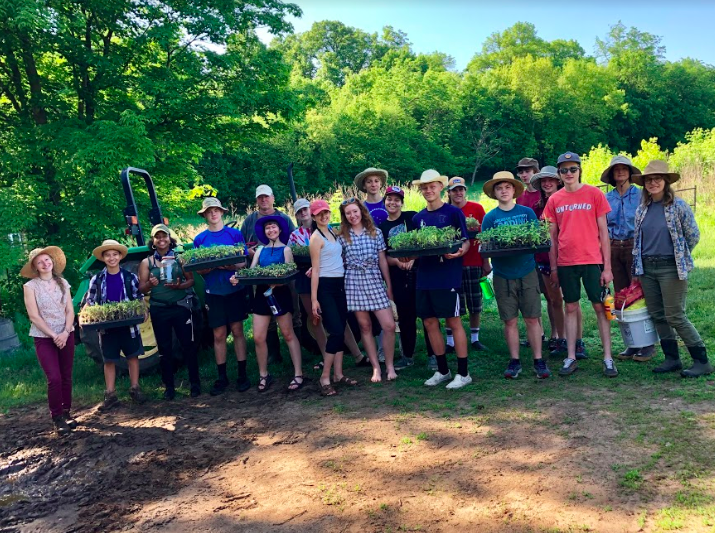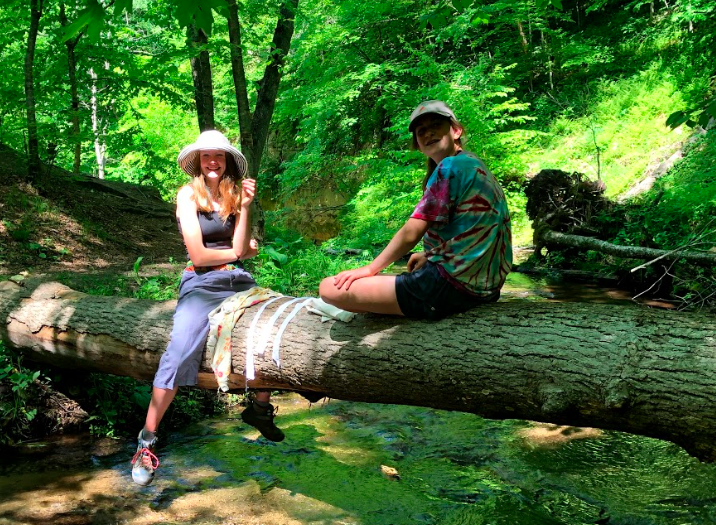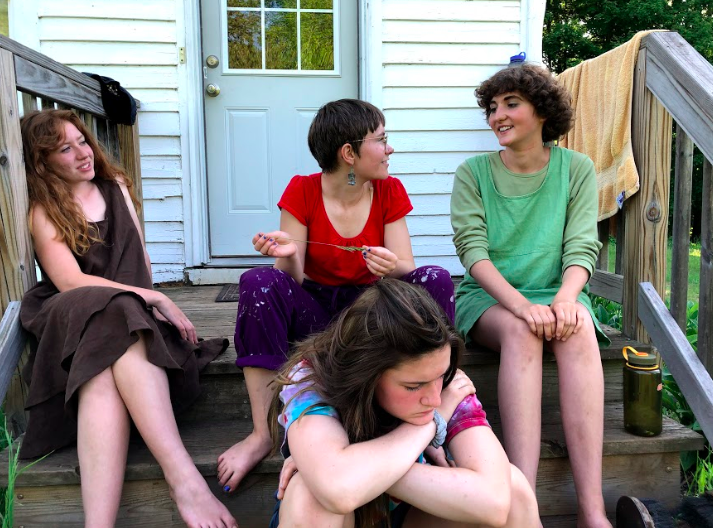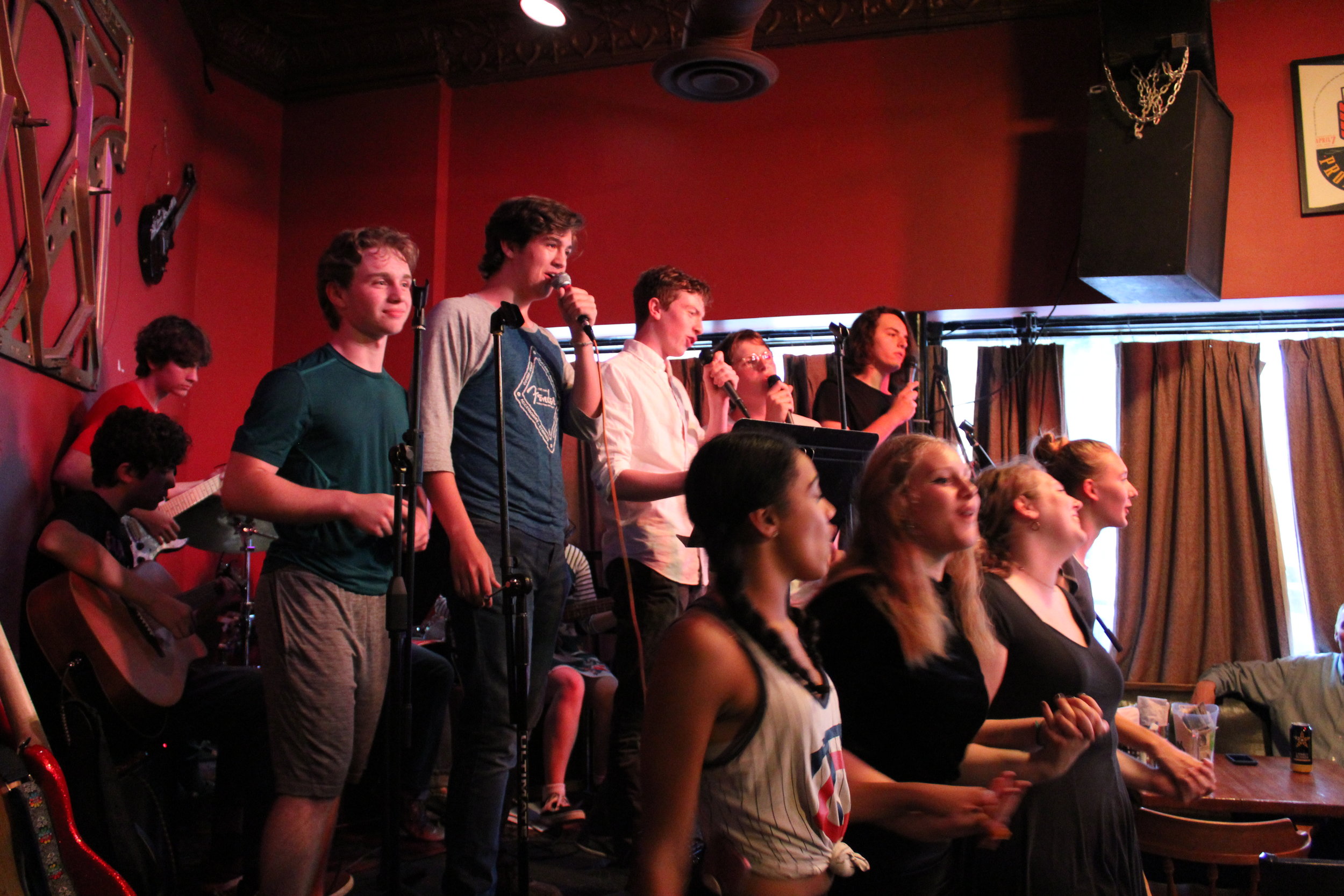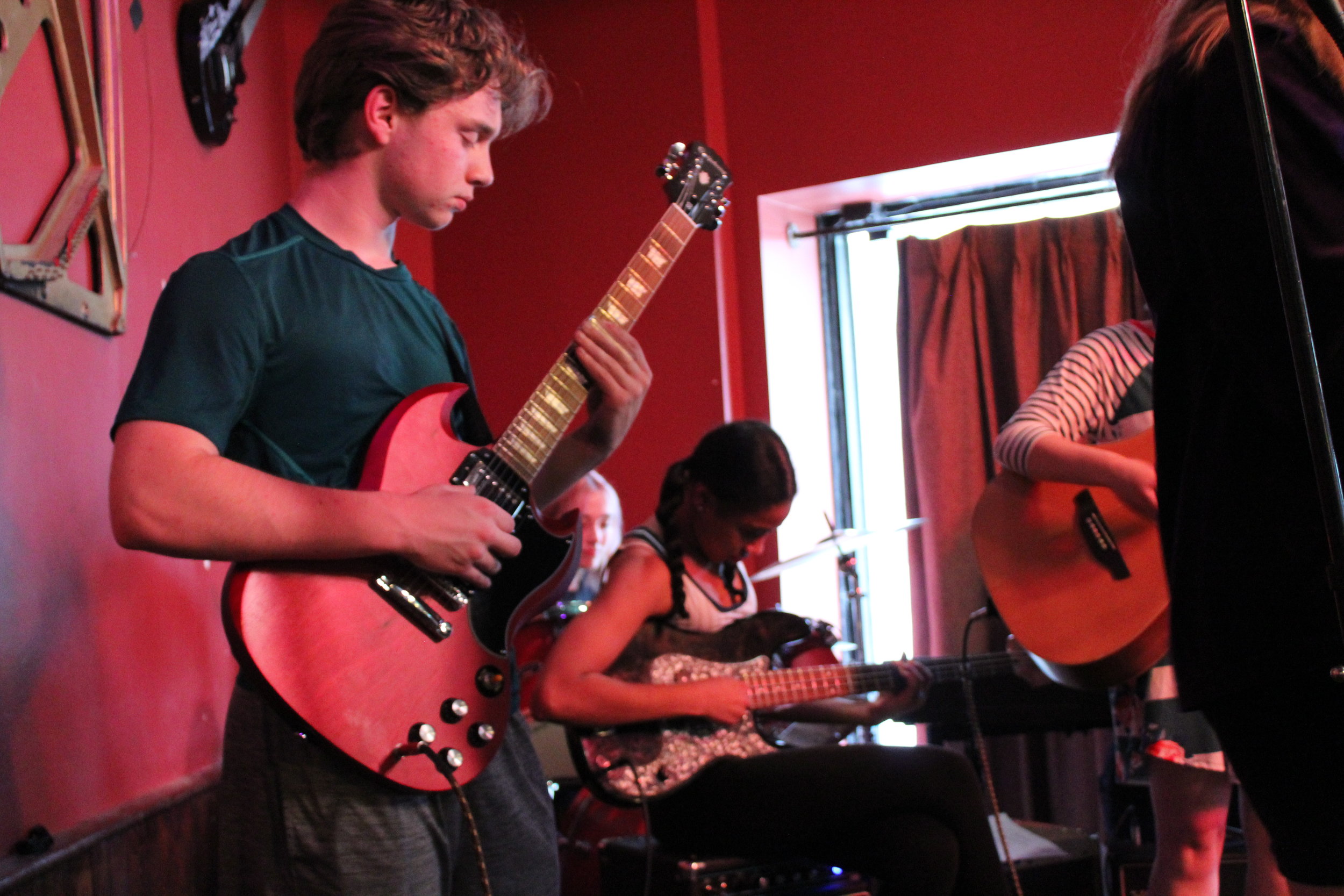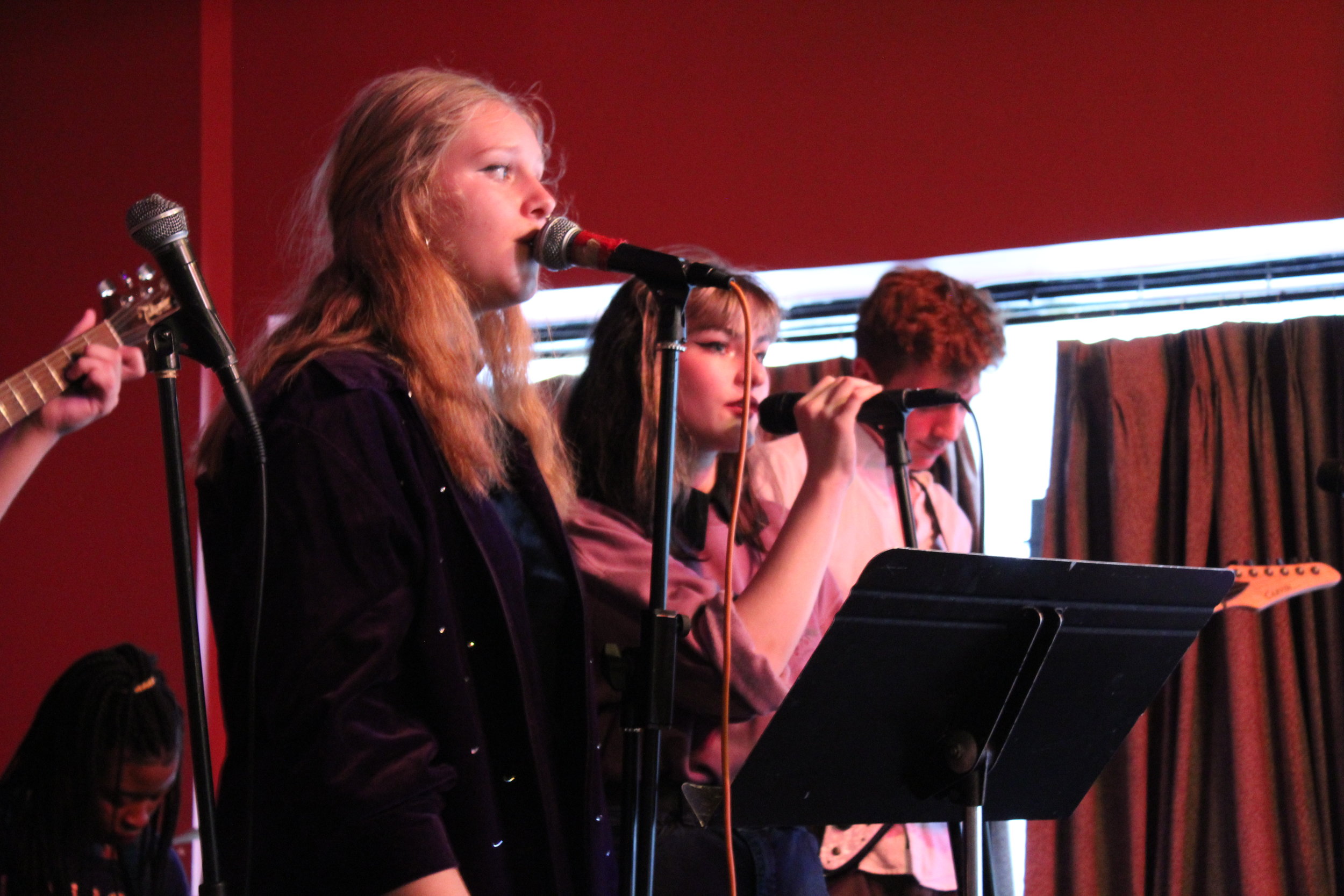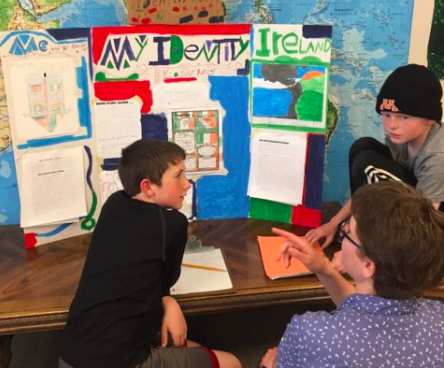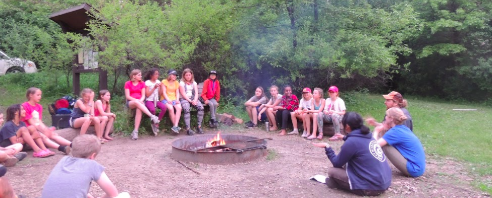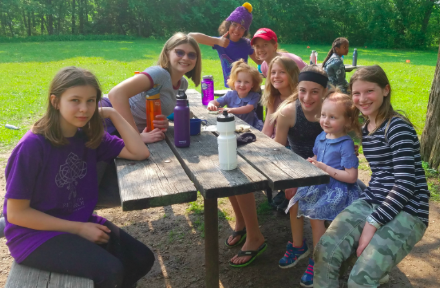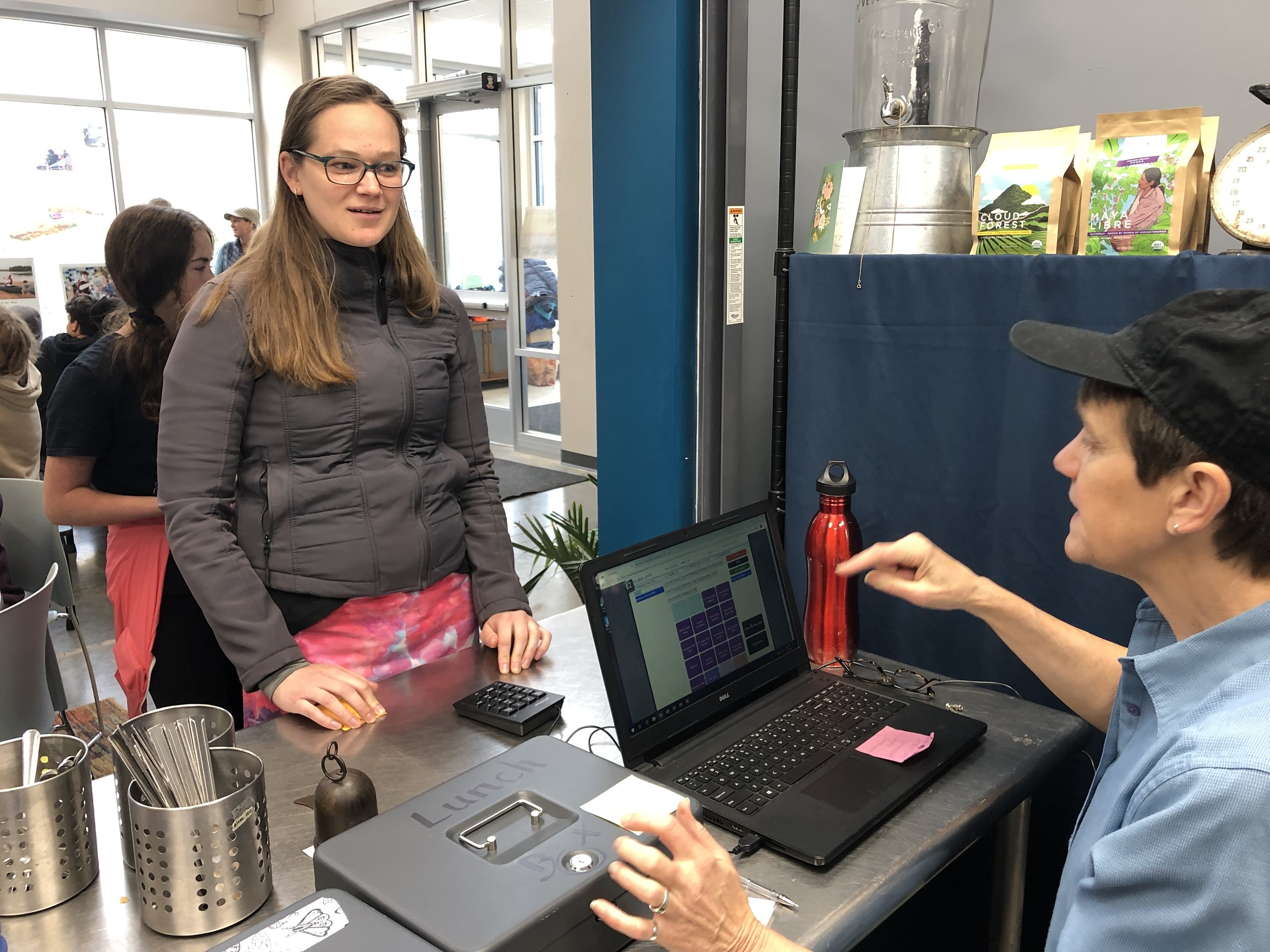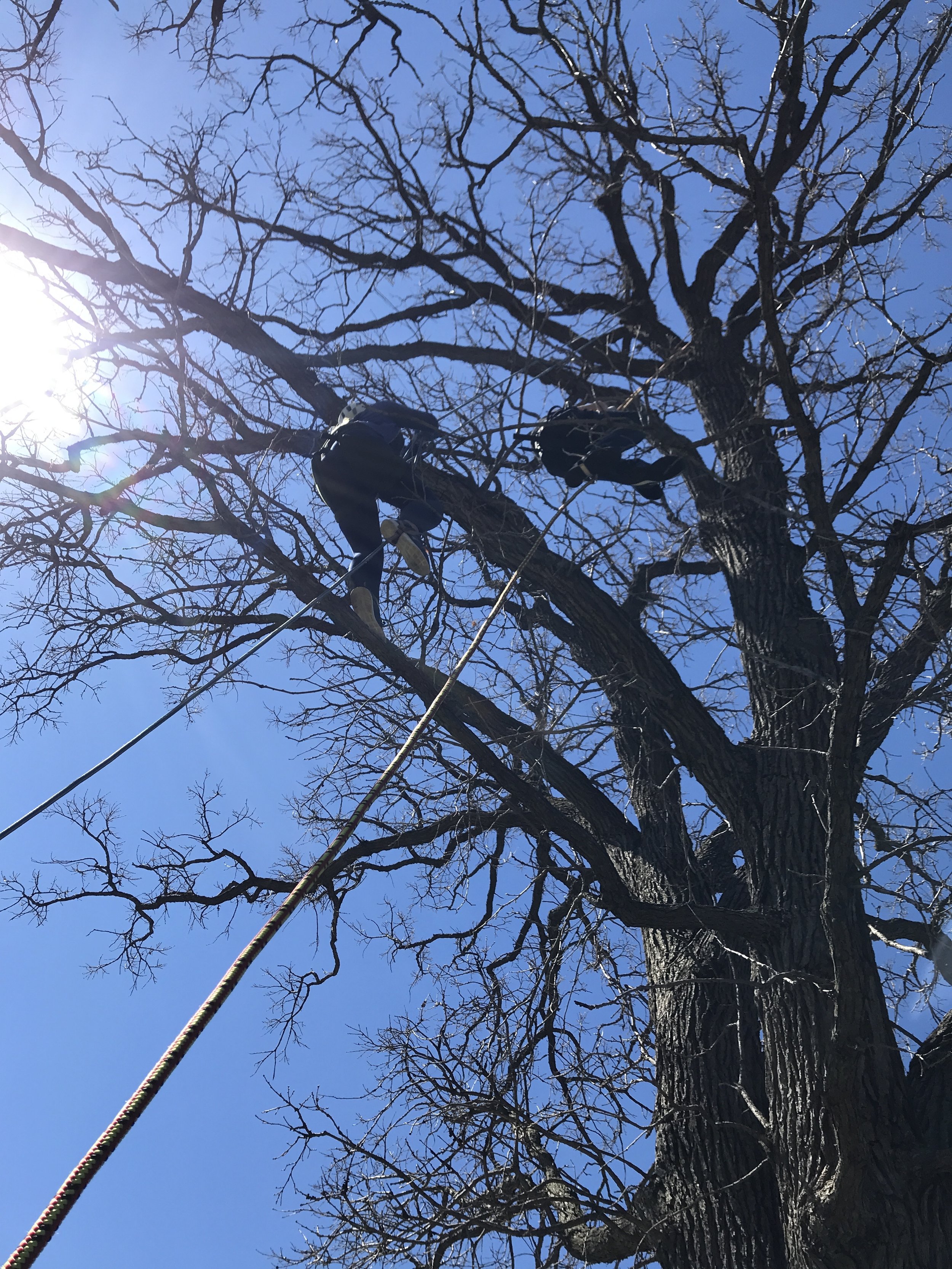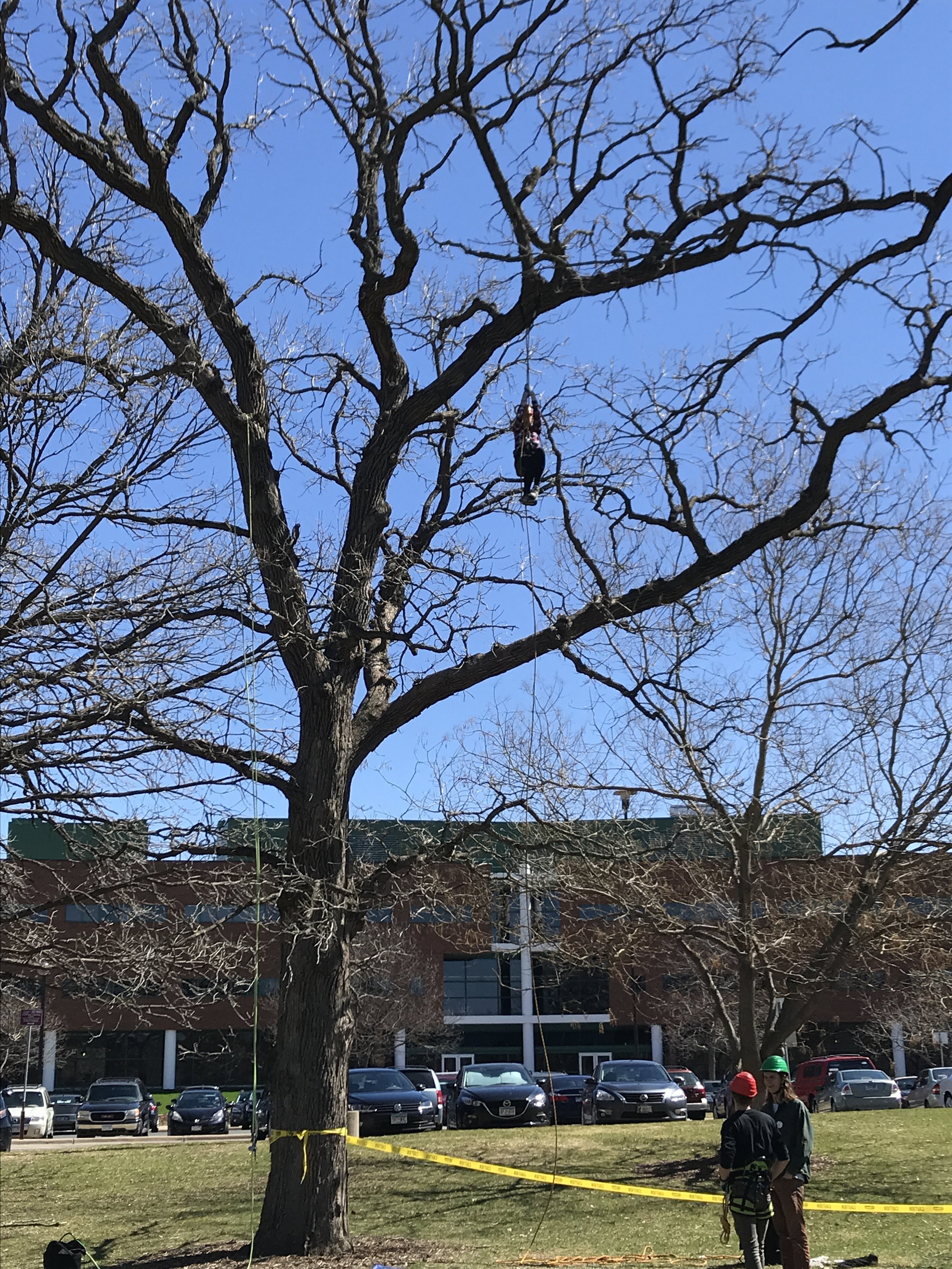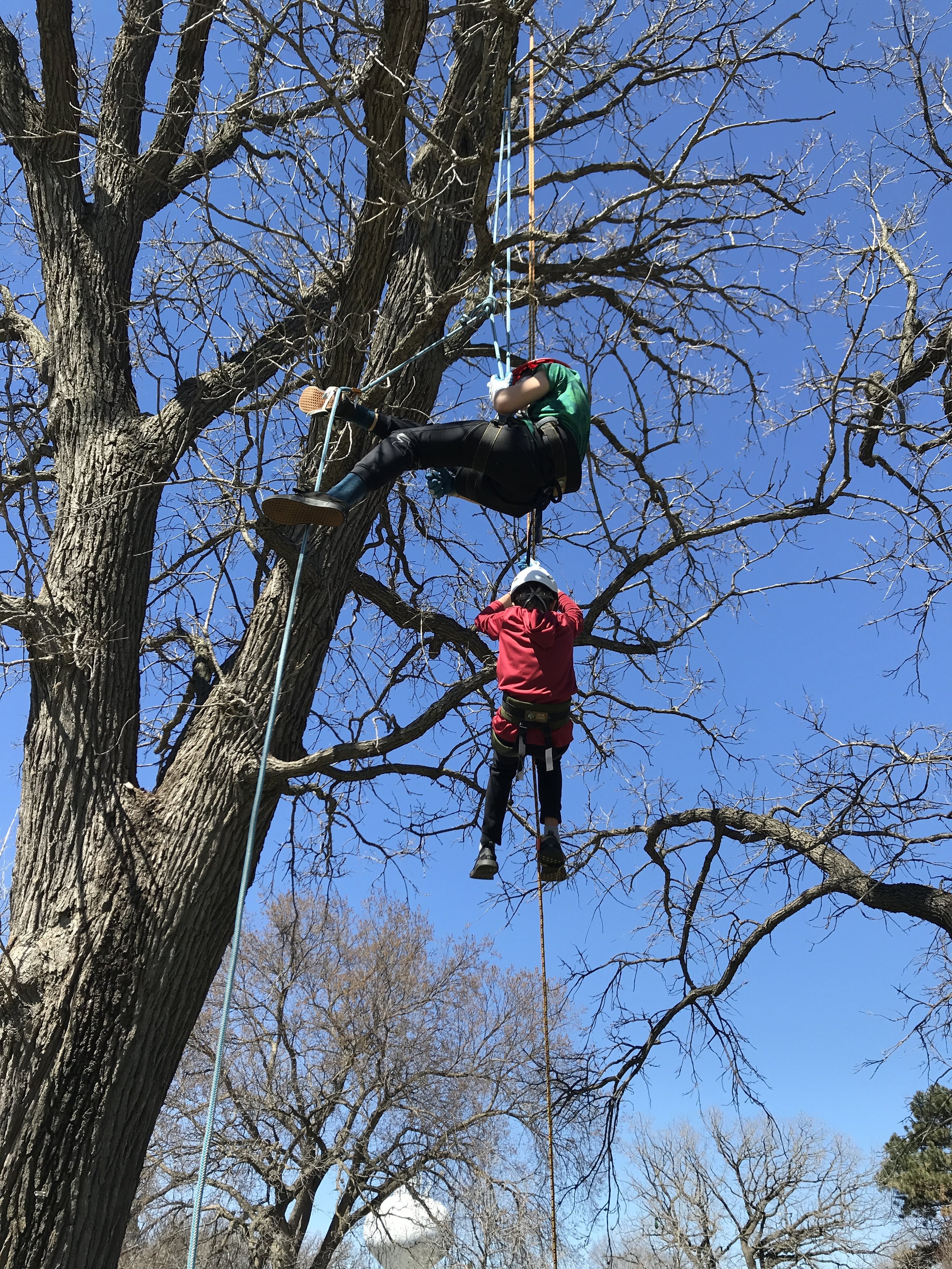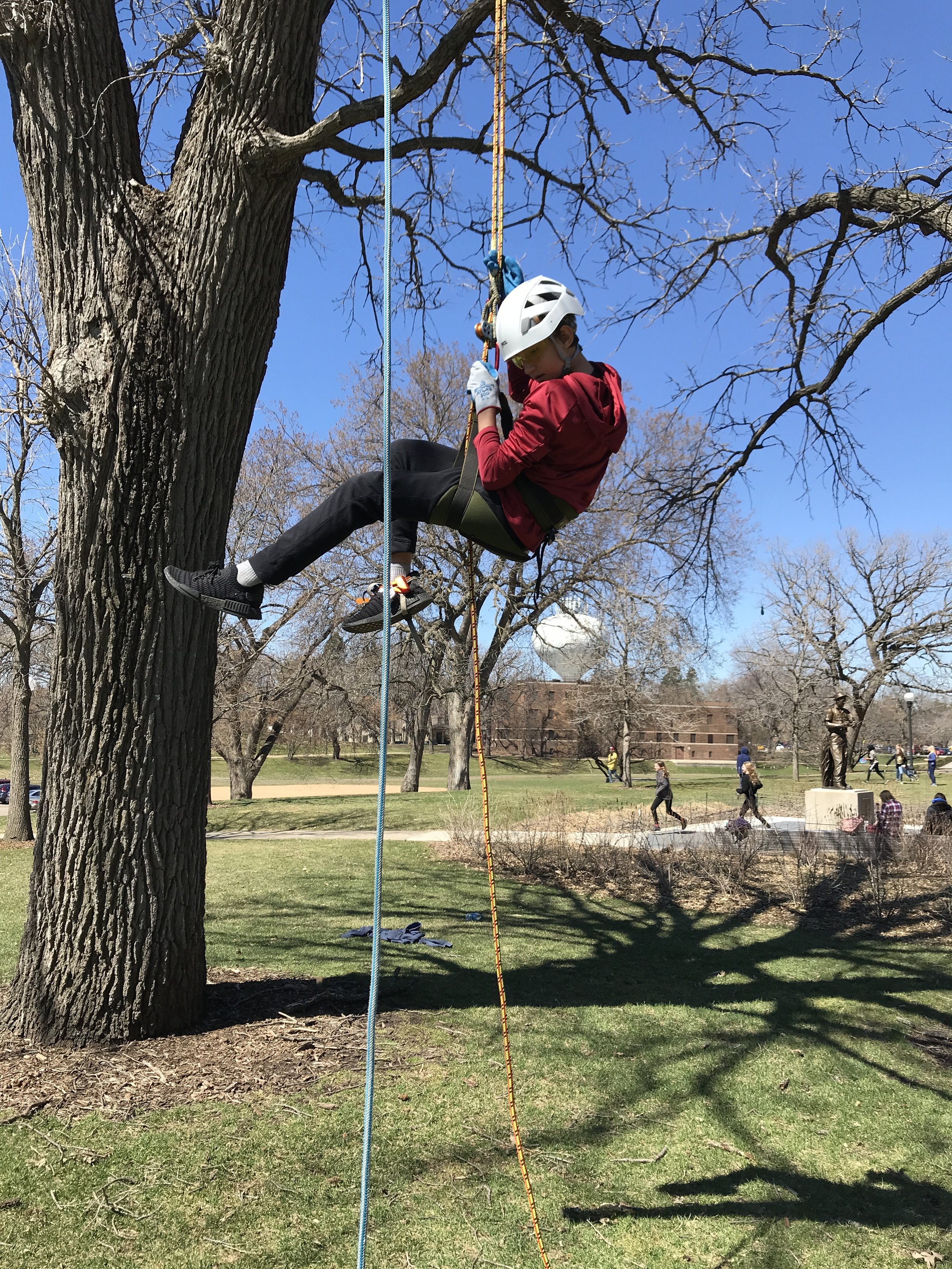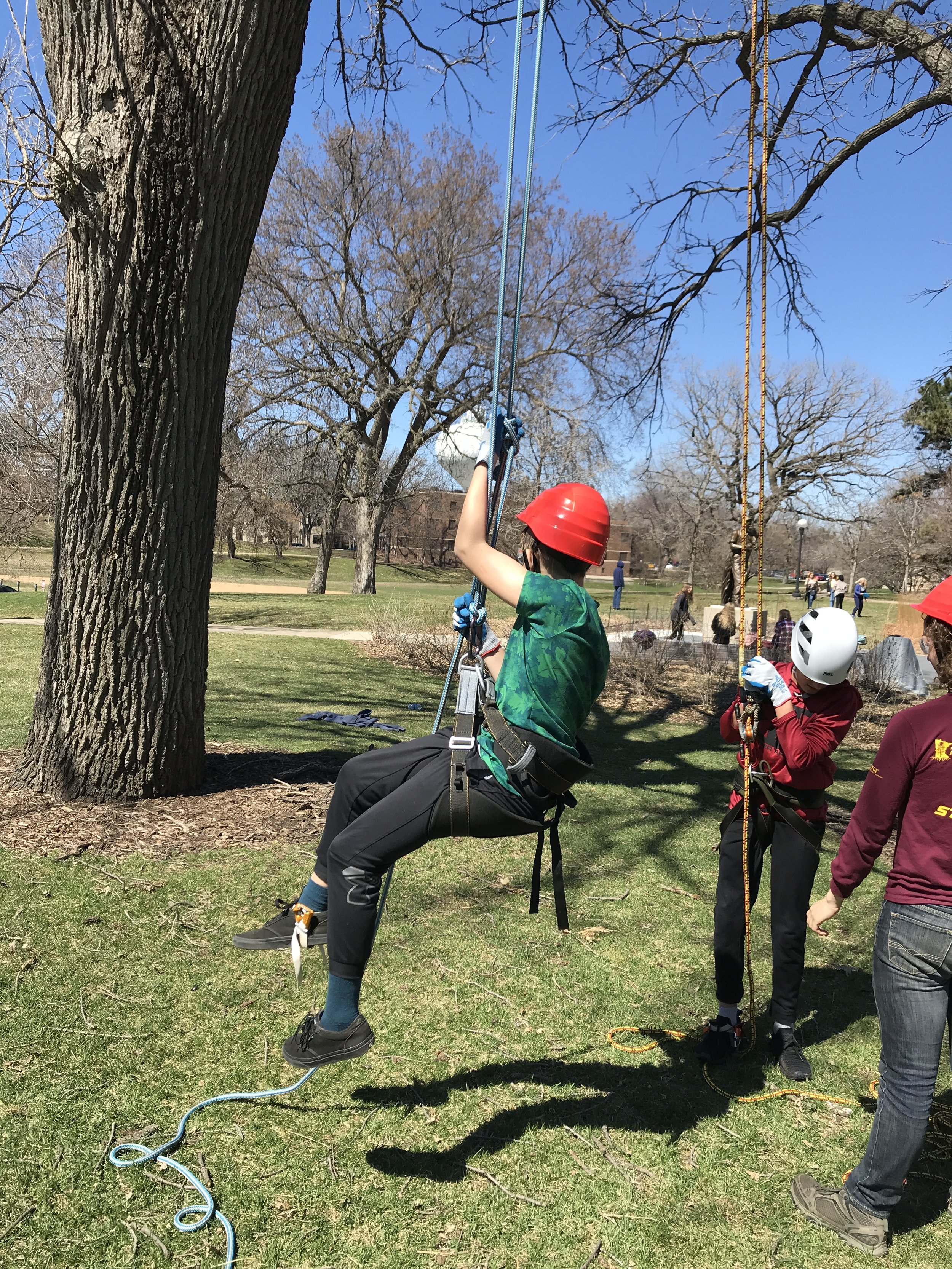Tenth Grade Red Lake Trip
written by Sarah Garton, UA Social Studies guide and trip lead
Boozhoo! This year the tenth graders were invited to visit Red Lake Tribal Nation as part of their unit on "Indigenous Histories and Futures." Students were asked to consider tribal history, food sovereignty and their role as guests on the reservation. We camped on the powwow grounds, visited the Red Lake Nation Tribal College, and observed Wasabiik Ojibwemotaadiwin, an Ojibwe language immersion preschool. We also spent one day harvesting at the Four Directions Development Garden and toured the Red Lake Nation Foods warehouse as well as the Fishery. We heard from noted scholars Anton Treuer, Brenda Childs and Winona LaDuke, as well as local Constitutional Reform Initiative Project and their Economic Development office, learning about their recent groundbreaking for new housing in South Minneapolis. Students also had the option to stay an extra day and experience hands-on food demonstrations as part of the Red Lake Nation Food Summit.
We all came home with full bellies and new knowledge and are very grateful to our hosts at Four Directions for coordinating such an amazing trip! Please check out all the work linked above and talk to Sarah Garton, UA Guide, if you have any questions or ideas about how GRS can continue the work of centering Native voices + sovereignty in our curriculum.
Eleventh Grade Northstar Quest
written by Laura Machacek, Ceramics guide and trip lead
On the 11th-grade Key Experience, North Star Quest, we spent four days exploring and learning about different colleges. Each night we also camped out and cooked dinner together (sometimes in the rain). This second week of school key experience truly helped develop strong relationships within the students as well as with the guides.
On Monday, our first stop was at the mid-sized public University of Minnesota Duluth where we attended a presentation by the admissions office then went on a self-guided tour of the campus. Along the tour we even sat in on a presentation at the Planetarium. That night, we camped out near the Boundary Waters and fell asleep to the sound of rain on our tent flys.
Tuesday morning we woke early, packed up our wet tents, and boarded the buses to spend half a day at the Ely Folk School. Students had the opportunity to try out a few folk crafts such as wild rice processing, fire making, Huichol style beading, traditional pastie making, birch bark canoe building, and blacksmithing. A small group of students even helped install a window at a sustainably built home a few miles away from the folk school. After the folk school experience, we headed to Ashland, Wisconsin to spend the night camping (not in the rain) at Prentice Park.
Wednesday morning, we packed up our tents again and boarded the buses to go on a beautiful morning hike to Houghton Falls with an outdoor education professor and current outdoor education students from Northland College. As a group, we paused at the end of the trail along the blustery, exhilarating shores of Lake Superior to reflect on the sounds and sights of the natural world. After the hike, we drove through the woods to Northland College for an admissions presentation, guided tour of the environmentally-friendly campus, and on-campus lunch. Afterward, we spent the night back in Minnesota at Nerstrand Big Woods State Park.
On the final day of the key experience, the 11th graders chose between touring Carleton College and St. Olaf College, both based in Northfield, Minnesota. Both groups experienced an extensive campus tour, admissions presentation, and on-campus lunch before returning back to Great River School. Overall, the students enjoyed the trip as a way to visit a variety of different colleges to not only jump-start the process of planning for post-secondary opportunities, but also for a way to build stronger relationships with other students (while trying to stay warm and dry in the rain).
-Laura Machacek, NSQ Trip Lead 2019
Senior Canoe Trip
Written by Caroline Miesle, Music & Theater guide and co-trip lead
During the second week of school, our senior class ventured into the north woods of Wisconsin to test their canoeing endurance on the Namekagon River. Over the course of 72 hours, students paddled 46.5 miles, cooked, and camped in the rain and shine. One of the highlights of this river trip is the “Senior Olympics,” which takes place in the middle of the week. Canoe groups compete against the staff in a series of events, ranging from artistic to minute-to-win-it to feats of strength. Taking them indoors this year (thanks to the rain) didn’t lessen the fun, and the competition was stiff! With days of paddling and nights of reflection around the campfire, the senior class is ready to tackle their final year at GRS.
